Visit to download the full and correct content document: https://textbookfull.com/product/chernobyl-01-23-40-the-incredible-true-story-of-the-w orld-s-worst-nuclear-disaster-andrew-leatherbarrow/

More products digital (pdf, epub, mobi) instant download maybe you interests ...
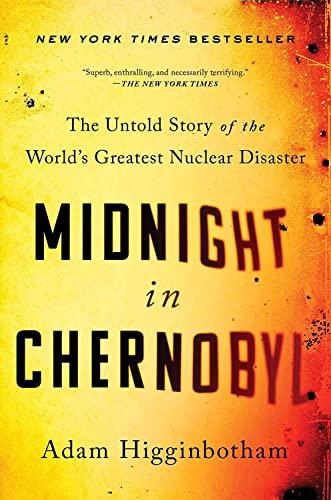
Midnight in Chernobyl The Untold Story of the World s Greatest Nuclear Disaster Adam Higginbotham
https://textbookfull.com/product/midnight-in-chernobyl-theuntold-story-of-the-world-s-greatest-nuclear-disaster-adamhigginbotham/

The Reykjavik Confessions The Incredible True Story of Iceland s Most Notorious Murder Case 1st Edition Simon Cox
https://textbookfull.com/product/the-reykjavik-confessions-theincredible-true-story-of-iceland-s-most-notorious-murdercase-1st-edition-simon-cox/
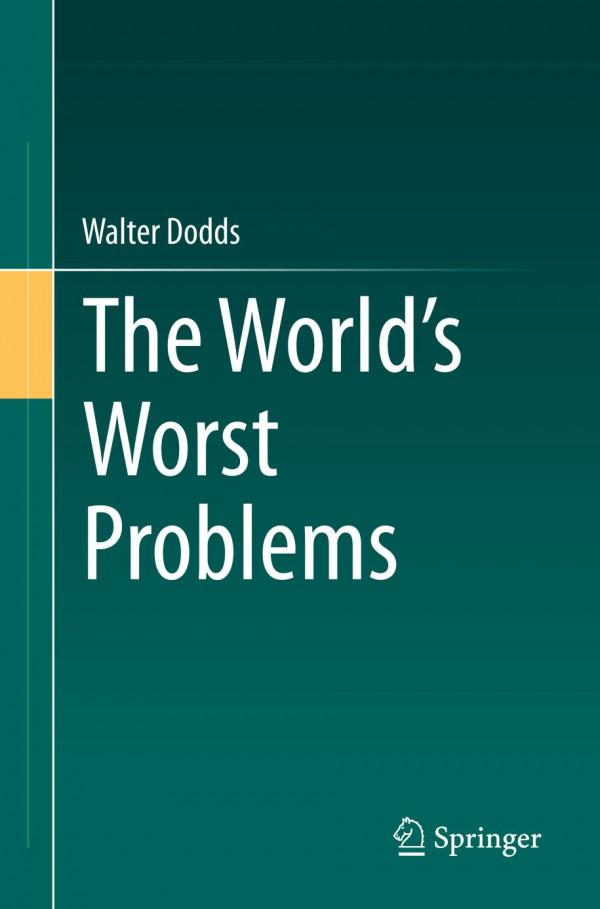
The World s Worst Problems Walter Dodds
https://textbookfull.com/product/the-world-s-worst-problemswalter-dodds/
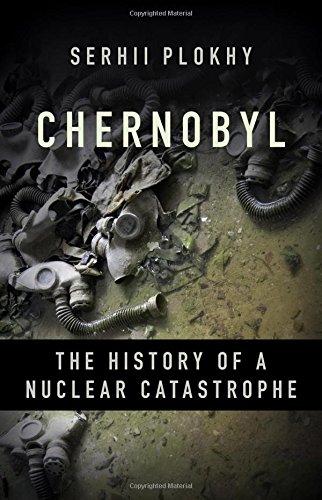
Chernobyl The History of a Nuclear Catastrophe 1st Edition Plokhy
https://textbookfull.com/product/chernobyl-the-history-of-anuclear-catastrophe-1st-edition-plokhy/

Chernobyl the history of a nuclear catastrophe First Edition Plokhy
https://textbookfull.com/product/chernobyl-the-history-of-anuclear-catastrophe-first-edition-plokhy/
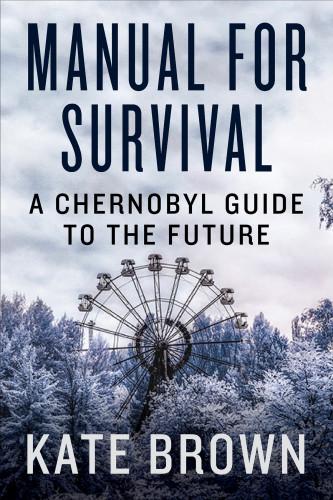
Manual for Survival An Environmental History of the Chernobyl Disaster Kate Brown
https://textbookfull.com/product/manual-for-survival-anenvironmental-history-of-the-chernobyl-disaster-kate-brown/
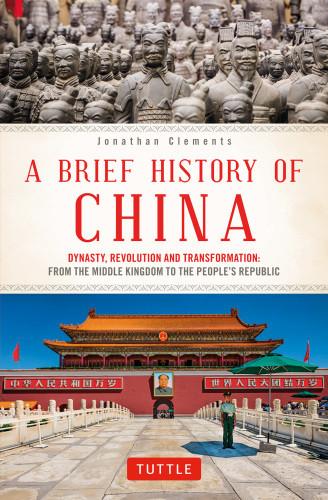
A Brief History of China Dynasty Revolution and Transformation The Incredible Story of the World s Oldest and Most Populous Nation Jonathan Clements
https://textbookfull.com/product/a-brief-history-of-chinadynasty-revolution-and-transformation-the-incredible-story-ofthe-world-s-oldest-and-most-populous-nation-jonathan-clements/
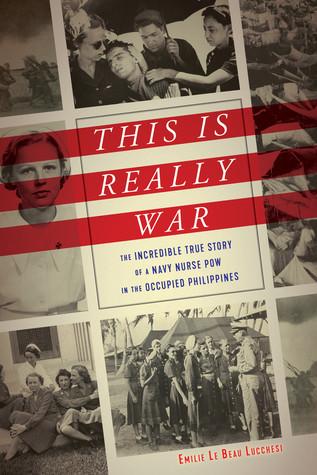
This Is Really War: The Incredible True Story of a Navy Nurse POW in the Occupied Philippines Emilie Le Beau Lucchesi
https://textbookfull.com/product/this-is-really-war-theincredible-true-story-of-a-navy-nurse-pow-in-the-occupiedphilippines-emilie-le-beau-lucchesi/

The incredible true story of Blondy Baruti my unlikely journey from the Congo to Hollywood First Simon & Schuster Hardcover Edition Blondy Baruti
https://textbookfull.com/product/the-incredible-true-story-ofblondy-baruti-my-unlikely-journey-from-the-congo-to-hollywoodfirst-simon-schuster-hardcover-edition-blondy-baruti/
CHERNOBYL

PREFACE

Thistext,titled“Chernobyl01:23:40”,isavailabletoorderasanebookandphysicalbook fromAmazon.ThebookwasreleasedonApril26thtocoincidewiththeaccident’s30th anniversaryTheversiononthiswebpageisveryoutofdatecomparedtothe�nalbook,but I’llleaveithereasaresource.
Ihavewrittenthisbecausetheredoesnotappeartobeanaccurate,accessible,detailed,comprehensive, yetfocusedandrelativelybriefaccountofwhathappenedattheChernobylnuclearplantonthe morningofthe26thofApril1986andthemonthsthatfollowedThereare,ofcourse,many compellingbooksandarticlesabouttheaccidentHowever,theyarealleitherextremelytechnicaland concentrateprimarilyontheeventsleadinguptotheaccidentanditsimmediateaftermath(Grigorey Medvedev’sexcellent‘ChernobylNotebook’,whichhasbeenaprimarysourceformanybooksonthe accident,andpartsofwhichI’llbeheavilyreferencing),tooshort,orverybroad,practicallyignorethe accidentitself,andgointodetailabout-inmyopinion-relativelydrysubjectsliketheagricultural impactinWesternEurope,andintheprocessskipovermanyoftheinterestingdetailssurroundingthe accident(LoresMedvedev’s‘LegacyofChernobyl’)Bothexamplesareverygoodbooks,butbothare lackingintheirownway.PerhapstheclosesttowhatIwaslookingforisAblazebyPiersPaulReed,
by Andrew Leatherbarrow - Exposure
buthewentintotoomuchdetailinsomeareasandnotenoughinothers,resultinginabookthatisa littledilutedandunbalancedcomparedtowhatIwaslookingforSo,afterlookingforthesortof comprehensivebutshort/mid-lengthbookIwantedtoreadanddiscoveringthatnosuchbookexisted, Idecidedtowriteonemyself
Thereisasurprisingamountofinaccurateandcon�ictinginformationabouttheeventsthattook placeThiscanbeattributedinmanywaystotheliestoldbytheSovietgovernmentduringthe�ve yearsaftertheaccident,buteveninpublishedbooksreleasedsincethenIhaven’treadasingletitlethat doesnotcontainatleastoneveri�ableerrorMygoal,therefore,wastopresentade�nitivetruth,using manydi�erentsourcesandaccountsfrompeoplewhowerethere,aswellasresistingthetemptationto avoidfactcheckingwhereverpossible,orusinghighlysuspectinformationIcannotverify.Wherethere aremultipleeyewitnessaccountsofspeci�cevents,youoften�ndthateventheycontradicteachother Intheseinstances,Ihaveeitherincludedorexcludedeachversion,orselectedtheversionI�ndmost plausible,basedonavarietyofcriteria.Certainpiecesofinformationrelatingtothewayinwhichthe reactorwasdestroyedareonlyavailableasmathematicalcomputermodels,butIhavedonemybestto reconstructacommonlyacceptedhypothesisBecauseofthepointsmentionedabove,Ihavebeen forcedtotheconclusionthatitwillneverbepossibletocreateaperfect,100%accurateaccountof whathappened,butIhavegonefaroutofmywaytoensurethisisastruthfulasitcanbe
WhileIhavemadepainstakinge�ortstoensurethatthedetailspresentedherearecorrect,certain aspects-mostlyrelatingtothereactorinonewayoranother-havebeendeliberatelysimpli�edtoan extent,forthesakeofkeepingthestoryeasytofollowforpeopleunfamiliarwiththetechnologyand terminologyIhavekeptthenumberofcharactersandtheirspeci�cstoriestoaminimumforthesake ofbrevity,concentratingonthosewhomIfeelweremostcentraltowhattookplaceAnothergoalof minewastonotgotoofarover50,000words,soIhavebeenveryselectiveaboutwhatgeneral informationIinclude,asofcoursethereisenoughto�llalibraryofbooks,letalonethisoneIhave triedmybesttodoallofthisinawaythatdoesnotintroducefalsehoodsMostimportantofall,Ido notwanttosensationalisetheaccident.Whathappenedissensationalinmanyways,butthestoryis frequentlyexaggeratedforthesakeofaddingdramaItisdishonestandunnecessary;thetrueevents weredramaticenough
Iwantedtousephotographstocomplementthestoryandgivepeopleavisualreferenceforsomeof thelocationsmentioned,but,whenitcomestoimagery,allbooksIhavefoundonthesubject-that aren’tdedicatedpresent-dayphotographybooks-eitherusetheexactsamehandfulofimagestakenby IgorKostin,becausethey’retheonlyphotographswidelyavailablefromthetime,GerdLudwig’s photosofthevictims,ortheycontainonlytext.Thebooksthatdocontainuptodatephotographs containonlycursoryinformationabouttheaccidentitself-iftheyhaveanyatallThosesamefamous photographshavebeenpublishedcountlesstimesallovertheworldandareeasyto�ndforthe curious,butthereareveryfewbookswithuptodatephotographsofChernobyl,Pripyatandthe surroundingareaIwasfortunateenoughtovisittheareainlate2011-the25thanniversaryyear-and tookhundredsofphotographsItmadesensetometoaccompanythebookwiththosephotographsto illustratewhatthearealookslike25yearslater,althoughIamdisappointedwiththepictures themselvesAcombinationofpoorweatherconditions,relativeinexperienceatthetime,andbeing tooamazedbyeverythingIwasseeingtoconcentratearetoblameStill,they’reinterestingtolookat, andserveasamodernreminderofwhattookplace.DuringthecourseofwritingthisIhavediscovered atroveoffascinatingandrarephotographsofbothChernobylandPripyatbeforetheaccident,which Ihopetoincludewithphysicalcopiesofthebook
OnceIdecidedtousemyownphotographs,Ithoughtitwouldbepotentiallyinterestingforreadersto hearaboutmyownexperiencethereChernobylhasbecomesomethingofatouristattraction,but
Chernobyl by Andrew Leatherbarrow - Exposure
therearemanypeoplewhoarecurioustoknowwhatit’sliketogothere,yetwillneverhavethe opportunity,soIsupposethisisforthemIfyouaren’tinterestedinthatsideofthings,youcansimply skipthosesections.IrealisethatIamnotmuchofawriter.WhenIstartedthisprojectIhadnever reallywrittenanythinginmylife,sothishasbeenalearningexperienceforme
Ithastakenagreatdealoftimeande�orttocreatethetextyou’rereadingnow,soIhopeyouenjoyit Finally,IwouldliketostatefortherecordthatIaminfavourofnuclearpowerindevelopednations, whenstricthealthandenvironmentalconsiderationsareadheredto.

Slavutychtrainstation,lookingeast-awayfromChernobyl
ABRIEFHISTORYOFNUCLEARPOWER
RadiationisperhapsthemostmisunderstoodphenomenonknowntohumanityEventoday,nowthat itse�ectsarewellknown,theword‘radiation’stillelicitsafearfuloverreactioninmostpeopleDuring theeuphoricdecadesofstudyfollowingitsdiscoveryattheturnofthecentury,peopleheldamore carefreeattitudeintheirignoranceItsmostwell-knownpioneeringresearcher,MarieCurie,diedin 1934fromaplasticanemiabroughtonbyherdecadesofunprotectedexposuretothefaint,glowing substancesinherpocketsanddeskdrawersTogetherwithherhusbandPierre,shebuiltuponGerman physicistWilhelmRöntgen’smomentous1895discoveryofX-rays,byworkingtirelesslyoutof,“an abandonedshedwhichhadbeeninserviceasadissectingroomoftheSchoolofMedicine,”onthe UniversityofParis’groundsCurieherselfnotedthat,“oneofourjoyswastogointoourworkroomat night theglowingtubeslookedlikefaint,fairylights”Whileresearchingthechemicalelement Uranium,thepairdiscoveredandnamednewelementsThorium,PoloniumandRadium,andspent signi�canttimestudyingthee�ectsofunusualwavesradiatingfromallfourMariedubbedthese
waves ‘radiation’andreceivedtheNobelPrizeforherworkUntilthispointintime,theatomwas believedtobetheabsolutesmallestthinginexistence;thatatomswerewhole,unbreakable,andby themselvesformedthebuildingblocksoftheuniverse.Curie’srevelationthatradiationiscreated whenatomssplitapartwasground-breaking
Herdiscoverythatthe�uorescentRadiumdestroyeddiseasedhumancellsfasterthanhealthycells spawnedawholenewindustryintheearly20thcentury,peddlingthe(mostlyimagined)propertiesof thismagicalnewelementtoanunsuspectingandmisguidedpublic.Thiscrazewasencouragedby authority�gures,includingaDrCDavis,whowroteintheAmericanJournalofClinicalMedicine that,“Radioactivitypreventsinsanity,rousesnobleemotions,retardsoldage,andcreatesasplendid, youthful,joyouslife.”Watchandclockfaces,�ngernails,militaryinstrumentpanels,gunsightsand evenchildren’stoysglowedwithradium,hand-paintedinfactoriesbyyoungwomenworkingforthe UnitedStatesRadiumCorporationTheunsuspectingartisanswouldlicktheirbrushes-ingesting radiumparticleseachtime-tokeepthetipspointedduringtheprecisionwork,butyearslatertheir teethandskullsbegantodisintegrateRadithor,a‘modernweaponofcurativescience’andoneof severalmedicinalradiumproductsofthetime,boastedthatitcouldcurepeopleofrheumatism, arthritisandneuritis.Radiumcosmeticsandtoothpastethatpromisedtorejuvenatetheskinandteeth werepopularforafewyears,aswerevariousotherproud-to-be-radioactiveproducts,suchasradium condoms;chocolate;cigarettes;bread;suppositories;wool;soap;eyedrops;TheScrotal Radiendocrinator(fromthesamegeniuswhobroughtusRadithor)toenhanceaman’svirility;and evenradiumsandforchildren’ssandpits,advertisedbyitscreatoras“mosthygienicand more bene�cialthanthemudofworld-renownedcurativebaths”Thetruehazardouspropertiesofradium, whichisaround2.7milliontimesmoreradioactivethanuranium,werenotrealisedoracknowledged bythepublicuntilthe1930sand40s
Feveredworktouncoverthesecretsoftheatomcontinuedthroughouttheearlyyearsofthe20th century,asscientistsacrossEuropemademanyimportantbreakthroughsBy1932,Americanphysicist JamesChadwickmadehisNobelwinningdiscoveryoftheneutron-the�nalmissingpieceofthe puzzleWithit,theatom’sstructurehadbeenunlocked:anatomconsistsofanucleus-acentral regionofprotonsandneutrons-circledbyelectronsTheatomicagehadtrulybegun
Severalyearslaterin1939,physicistsLiseMeitner,OttoFrischandNielsBohrdeterminedthatwhen anatomnucleussplitsandcreatesnewnuclei(aprocesscallednuclear�ssion),itreleasesvastamounts ofenergy,andthata�ssionchainreactionwaspossibleThenewsbroughtwithitthetheorythatsuch achainreactioncouldpotentiallybeharnessedtocreatealimitlesssupplyofcleanenergyforships, planes,factoriesandhomes,orunleashedfromaweaponofunfathomabledestructiveforce.Justtwo daysbeforeWorldWarIIbegan,BohrandJohnWheelerpublishedapaperproposingthat�ssion wouldworkbetterinanenvironmentwherea‘moderator’wasintroducedtoslowthespeedof neutronsmovingwithinanatom,thusgivingthemagreaterchancetocollideandsplitawayfromone another Asthepopularityofradioactivecivilianproductscollapsed,thedesperationandurgencyofWorldWar IIbroughtaboutotherremarkableadvancesinthe�eldBritainwasinitiallythecountrymostdevoted tounlockingthesecretsofa�ssionweaponGermanyhadtheirownnuclearprogram,butitfocused onpowerreactordevelopmentAftertheJapaneseattackonPearlHarboronDecember7th,1941, America-whichhadpreviouslyconcentratedonnuclearnavalpropulsion-beganitsownserious �ssionresearch,applyingvastresourcestothedevelopmentofanatomicbombWithinayear,the world’s�rstnuclearreactor,ChicagoPile-1,wasbuiltattheUniversityofChicagoaspartofAmerica’s ManhattanProject,supervisedbyNobelLaureateforPhysicsEnricoFermiThereactor,famously describedbyFermias,“acrudepileofblackbricksandwoodentimbers,”�rstwentcritical(achieveda
by Andrew Leatherbarrow - Exposure
self-sustainingchainreaction)onDecember2nd,1942Usinggraphiteasitsmoderator,thereactor hadneitheraradiationshieldnoracoolingsystemofanykindItwasamassiveandrecklessriskby Fermi,whohadtoconvincehiscolleaguesthathiscalculationswereaccurateenoughtoruleoutan explosion
JosephStalinlearnedtheUnitedStates,BritainandGermanywereallpursuing�ssionafteraphysicist namedGeorgiFlerov,returningfromthefrontlines,noticedallresearchonnuclearphysicshad disappearedfromthenewlypublishedinternationalsciencejournals.Theyoungman(whonowhas anarti�cialchemicalelementnamedafterhim:Flerovium)realisedthearticleshadbecomeclassi�ed andwrotealettertoStalin,inwhichhestressedthesigni�canceoftheirabsence;“buildtheuranium bombwithoutdelay.”Thedictatortooknoticeanddevotedmoreresourcestowardsthepotentialof �ssionenergyHeinstructedprominentRussianscientistIgorKurchatovtofocusoncoordinating espionageinformationontheManhattanProject,andtobeginsurreptitiousresearchintowhatwould benecessaryfortheSovietstobuildabomb.Todothisinabsolutesecrecy,Kurchatovestablisheda newlaboratory,hiddenawayinMoscow’swoodedoutskirts
TheAlliedforcesdeclaredvictoryoverGermanyonMay8th,1945,andAmericaturneditsattention toJapanMeanwhile,KurchatovhadmaderapidprogressbutwasstillbehindtheAmericans,who, underRobertOppenheimer,successfullytestedthe�rstatomicdeviceat05:29:21onJuly16th,1945, nearAlamogordo,NewMexicoAsthiswasthe�rsttimeaweaponofsuchdevastatingpotentialhad beentestedandtheconsequenceswereunproven,Fermihado�eredtotakewagersfromthephysicists andmilitarypersonnelpresentastowhetherthebombwouldignitetheatmosphere,and,ifitdid, woulditonlydestroythestateortheentireplanetCodenamed‘Trinity’,theblastdugacrater1,200 feetindiameter,andproducedtemperaturesof‘tensofmillionsofdegreesfahrenheit’Frightenedby whathehadwitnessed,physicistGeorgeKistiakowskysaid,“Iamsurethatattheendoftheworld,in thelastmillisecondoftheEarth’sexistence,thelastmanwillseewhatwehavejustseen”Amerethree weekslater,onAugust6th,amodi�edBoeingB-29Superfortressdroppedthe�rstatomicbombon thecityofHiroshima,Japan,anditspopulationof350,000people.Itconverted0.8gramsofuranium intoaforceofenergyequivalentto16,000tonsofTNTAsecondbombfollowedthreedayslaterat NagasakiOver100,000people-mostofthemcivilians-diedinstantlyJapansurrenderedwithindays; WorldWarIIwasover.
Despitethehorri�cdisplay,fearinsomepartsoftheworldgraduallygavewaytowonderand optimismathowsuchasmalldevicecouldproducesomuchenergyEvenso,weaponsdevelopment continuedRussia’s�rstplutoniumproducingreactor(plutoniumdoesnotoccurinnature)came onlineatMayakin1948,followedbytheir�rstatomicbombtestinthedesertsofKazakhstanduring Augustof1949.OutsidetheSovietUnion,attentionintheWestturnedtowardsapplying�ssion’s unprecedentedenergypotentialtocivilianpurposesFivedaysbeforeChristmasof1951,America’s small‘ExperimentalBreederReactor1’becametheworld’s�rstelectricity-producingreactorwhenit generatedsu�cientelectricitytolightfour200-wattlightbulbsTwoyearslater,America’sPresident Eisenhowerannouncedthe‘AtomsForPeace’programduringaspeechinwhichhepledgedthe UnitedStates’,“determinationtohelpsolvethefearfulatomicdilemma-todevoteitsentireheartand mindto�ndthewaybywhichthemiraculousinventivenessofmanshallnotbededicatedtohisdeath, butconsecratedtohislife”Partgenuineattempttopushforciviliannuclearinfrastructureand furtherresearch,partpropagandaprogramtosilenceglobalcriticsofnuclearenergyandprovidea coverforanucleararmsbuild-up,AtomsForPeaceultimatelyleadtothecreationofAmerica’snuclear powerstations
OneofRussia’sexistingmilitaryplutoniumproductionreactorswasmodi�edforelectricity generation,andinJune1952,AM-1-shortfor‘PeacefulAtom1’inRussian-becametheworld’s�rst
Chernobyl by Andrew Leatherbarrow - Exposure
civiliannuclearpowerstation,generating6-Megawattselectric(MWe)Itwasagraphitemoderated, watercooledcon�guration,whichservedasaprototypeforChernobyl’sRBMKreactorsTwoyears later,QueenElizabethIIopenedBritain’s�rstcommercial50MWenuclearreactoratWindscale,as thegovernmentannouncedthatBritainhadbecome,“the�rststationanywhereintheworldto produceelectricityfromatomicenergyonafullindustrialscale”
Bothdominantsuperpowersrecognisedtheobviouspotentialnavalbene�tsofapowersourcewhich onlyneedstoberefuelledeveryfewyears,andworkedhardtoreducethescaleoftheirreactordesigns. By1954,miniaturisationhadprogressedfarenoughfortheUnitedStatestolaunchtheworld’s�rst nuclearsubmarine,andbothAmericaandRussiahadnuclear-poweredsurfaceshipswithinafurther �veyears.
In1973,the�rsthighpowerRBMK-1000reactor-thesametypeusedatChernobyl,whichwasunder constructionatthetime-startedupinLeningradAmericaandmostWesterncountrieshadnow settledonaPressurisedWaterReactordesign-watermoderatedandcooled-asthesafestoptionFrom thelate1970suntilearly2000s,constructionofnewreactorsstalled:aconsequencebothofthe world’sreactiontotheChernobylandThreeMileIslandincidents,andofimprovementstothepower capacityande�ciencyofexistingreactorsNuclearpowerreacheditspeakintermsofnumberof reactorsoperatingin2002,with444inuse,butitwasn’tuntil2006thatthehighestlevelofnuclear generatedelectricityrecordwasset:2,660Terawatt-hoursforthecalendaryear
Asof2011,nuclearpowerprovided117%oftheworld’selectricity,withover430commercialnuclear reactorsoperatingin31countries.Combined,theygenerate372,000Megawattsofelectricity.The currentlargestnuclearplantisJapan’sKashiwazaki-KariwaNuclearPowerPlant,whichgenerates 8000MWfrom7reactors,thoughitisnotcurrentlyinuseFranceisthecountrymostdependenton nuclearpower,providingroughly75%ofitselectricitythroughnuclearpowerplants,whileAmerica andRussiabothhoveraroundthe20%markSlovakiaandHungaryweretheonlyothercountriesto producemorethan50%oftheirelectricityfromnuclearpowerasoftheendof2014,thoughUkraine, whereChernobylissituated,stillreliesonnuclearfor49%ofitsenergy
Nuclearelectricityhasbecomethepowersourceofchoiceformanylargenavalvessels.Thispeakedin theearly1990s,whenthereweremorenuclearreactorsinships(mostlymilitary-over400in submarines)thanthereweregeneratingelectricpowerincommercialpowerplantsworldwideThis numberhassincedwindled,buttherearestillsome150shipsandsubmarinescontainingnuclear reactorsRussiaisconstructingtheworld’s�rst�oatingnuclearpowerstationbargeforuseinthe Arctic,whichcouldbetowedtowhereverpowerisneededContainingtwomodi�ednavalreactors fromice-breakersandoperatingatacapacityof70MW,theAkademikLomonosovisexpectedtobe deliveredinSeptember2016.WhiletheRussianswillclaimthetitleof�rstbargetoproducenuclear power,�oatingpowerstationsarenotanewideaTheUnitedStatesbuiltthe�rst�oatingnuclear powerstationinsideaconvertedex-WWIILibertyShipinthelate‘60s,thoughnoneoperatetoday. Chinaisalsoenteringthemarket,andexpectsits�rst�oatingnuclearpowerstationtobegin generatingelectricitysometimein2020
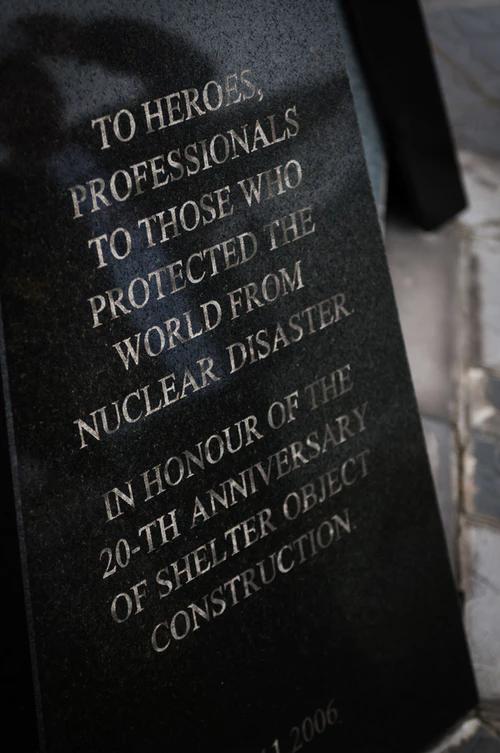
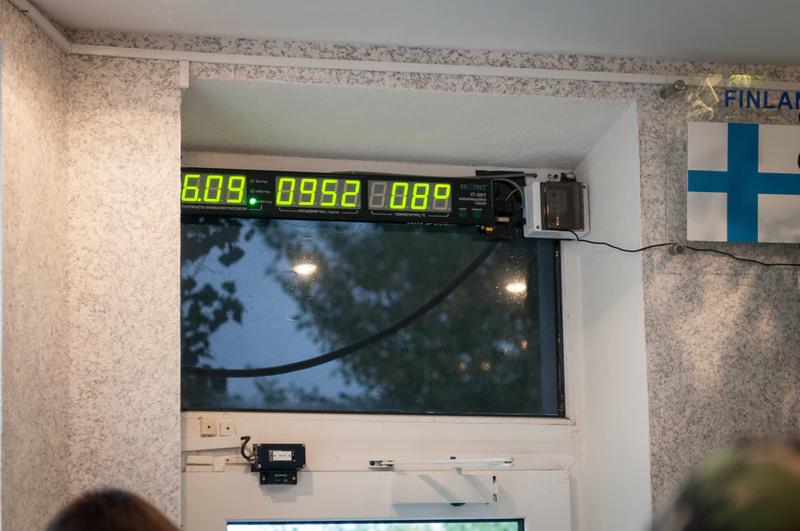
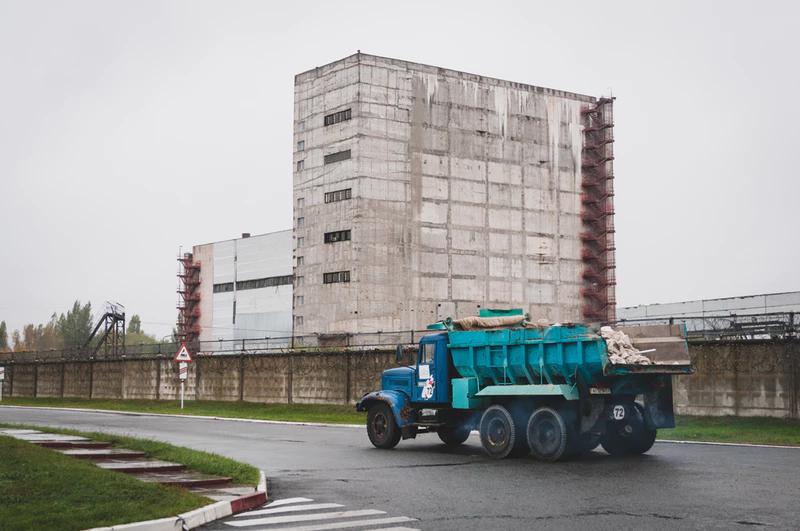
PREVIOUSACCIDENTS
Itisimpossibletosayforcertainhowmanypeoplehavediedasaresultofnuclearaccidents,because cancersandothermedicaldisordersresultingfromexposuretoradiationareoftenindistinguishable fromanyothercauseOnlyestimatescanbemadeAswithMarieCurie,itislikelythatmanyofthe earlypioneersofradiationresearch(andearlypatientsreceivingoverpoweredX-rays)werekilledlater inlife-viacancerorradiation-relatedillnesses-bythatwhichtheystudiedEventhoughCurie’swork deterioratedherhealth-andthoseofhercolleagues-untilhereventualdeathin1934,shecontinued todenythehazardsofradiation.Curie’stwochildren-whocontinuedherworkandwontheirown NobelPrize-werealsokilledbyradiationEvendeathsresultingfromacuteradiationsyndromehave noreliablestatistics,astheSovietUnioncoveredupallseriousaccidentsuntiltheChernobyldisaster, anditispossiblethatsecretive,nuclear-capablecountriesnotoriousforbureaucraticcorruptionsuch asPakistan,IranandNorthKoreamaycontinuetodoso
Therearearound70nuclearandradiationaccidentsinvolvingfatalitiesonpublicrecord,almostallof whichresultedinlessthan10deaths,althoughtherehavewithoutdoubtbeenmorewhichwillhave beenkepthiddenInterestingly,manyoftheseeventsareattributedtomiscalibrationortheftof medicalradiotherapyequipment
Forinstance,morethan240peoplewereexposedtoradiationinGoiânia,BrazilinSeptember1987, afterthievesdismantledasteelandleadcapsulestolenfromanearbysemi-demolishedhospital.The capsule,whichcontainedradioactivecaesiumfromaradiotherapymachine,wasstoredintheback gardenofoneofthemenThere,overthecourseofseveraldays,duringwhichboththievesbecameill, thepairhackedawayatthecapsuleuntiltheypierceditsprotectivesteelcasing.Themenattributed theirsymptomstosomethingtheyhadeaten,notsuspectingtheirloot,andsubsequentlysoldthe compromisedcapsuletoascrapyarddealernamedDevairFerreiraThatnight,Devairnoticedthe materialinsidegaveo�ablueglowandassumedittobevaluable-evensupernatural.Toprotectit,he storedthecapsuleinthehomehesharedwithhiswifeGabriela,anddistributedpowderandfragments amongfriendsandfamilyThisincludedDevair’sbrother,whogavesomeofthecaesiumpowderto hissixyearolddaughterEnticedbythemagicalblueglow,sheplayedwithit,spreadingitonherself likeglitter,andingestedtheradioactiveparticlesTwoofDevair’semployeesspentseveraldaysfurther dismantlingthecapsule,toextracttheleaditcontained
Gabrielawasthe�rsttonoticethatsheandeveryonearoundherwasbecomingseriouslyillDespite beingtoldbyaDoctorthatshe,too,washavinganallergicreactiontosomethingshehadeaten,she wasconvincedtheculpritwastheunusualmaterialwhichhadsofascinatedherfamilyGabriela reclaimedthecapsulefromasecondscrapmerchant,towhomithadnowbeenresold,andtookit-by bus-toanearbyhospital,whereshedeclaredthatitwas,“killingmyfamily”.Herforesightprevented theincidentfrombeingfarmoreserious
Chernobyl by Andrew Leatherbarrow - Exposure
Thecaesiumthensatunidenti�edinacourtyarduntilthenextday,whenavisitingmedicalphysicist, whohadbeenaskedtoinvestigatebyaDoctoratthehospital,“arrivedjustintimetodissuadethe�re brigadefromtheirinitialintentionofpickingupthesourceandthrowingitintoariver”.Gabriela perished,alongwiththelittlegirlandDevair’stwoemployeesDevairFerreriahimselfsurvived,despite receivingahigherdosethananyofthefourfatalitiesBecausethecapsulehadbeenopenedand transportedseveraltimesduringthetwoweekincident,severalareasofthecitywerecontaminated, necessitatingthedemolitionofmultiplebuildings
Thetotalnumberoffatalitiesfromaccidentsrelatingtociviliannuclearpowerisrelativelylow-far lowerthandeathsrelatedtoconventionalcoal,oilorhydropoweraccidentsToplacethisin perspective,considerthedeathtollsoftheworstconventionalpower-relatedaccidents.
Coalmining,notoriousforbeingdangerous,contributesahugenumberofdeathsAlistofjust32 notablecoalminingaccidentstotalsalmost10,000fatalities,whileallAmericancoalminingaccidents since1839accountforover15,000deathsTheworstoftheseincidentsoccurredonApril26th1942, exactly44yearspriortotheChernobyldisaster,whenagasexplosionatChina’sBenxihuCollierylead tothedeathsof1,549miners
TheNigerianNationalPetroleumCorporation’sJesseOilPipelineexplodedin1998,killingover700 people-oneofdozensofsimilarincidentsinthecountry.Itsexactcausewasneverdeterminedbecause everyoneinthevicinitywaskilled,buttheexplosionwaseitherduetopoormaintenanceor-justas likely-deliberatesabotagebyscavengersseekingtostealoilAnotherstrikingoil/gasaccident happenedneartheRussiancityofUfa.Whenaleakspranginalargegaspipelineneararemotesection oftheTrans-Siberianrailway,insteadoflocatingand�xingit,workersincreasedthepipe’sgaspressure tocompensateThisgradually�lledthevalleythroughwhichitranwitha�ammablemixtureof benzineandpropane-butane,untilpeopleupto5milesawayreportedsmellinggas.OnJune4th, 1989,twotrainscarryingatotalofaround1,200familyholidaymakers,runninginopposite directions,passedneartheleakingpipelineatthesametimeSparksfromtheirwheelsignitedthe lingeringgas,triggeringanexplosionof,“frighteningmight”-10,000tonsofTNTBothlocomotives andtheir38carriageswereincineratedand�ungfromthetracks,accordingtoMikhailMoiseyev,the Army’sGeneralChiefoftheSovietGeneralSta�Theexplosionwassopowerful,“thatitfelledall treeswithin4kilometers,”hesaidTheaccidentclaimedthelivesof675people,over100ofwhich werechildren Hydropower’smostcatastrophicaccidentoccurredduringSuper-TyphoonNinain1975,afterayear ofrainfellonChina’sHenanProvincein24hoursTheBeijing-basedCentralMeteorological Observatoryhadpredictedjust100mmwouldfall,leavingpeopleunpreparedforwhatfollowed. “Whentheraincontinued,thedayswerelikenightsasrainfelllikearrows,”survivorswerequotedas sayingbyo�cialrecords“Themountainswerecoveredalloverbydeadsparrowsaftertherain”Just after1amonAugust8th,theBanqiaoDamfailedwithwhatsounded,“liketheskywascollapsingand theEarthwascracking”Anunstoppabledelugeofwaterthenpromptedachainreactionthat overwhelmed61otherdamsandreservoirsTheresulting11kilometer-wide,50km/hwaveultimately killedastaggering171,000people,destroyedthehomesof11millionmore,andwipedoutentire communities AnumberofnuclearaccidentsareworthhighlightingOneearlyexampleisthatofa62-kilogram pieceofplutonium,whichwentcriticalontwoseparateincidentsattheLosAlamosnuclearresearch laboratoryinNewMexico,US.Itwassubsequentlygiventhenickname‘TheDemonCore’.The�rst occasionoccurredonAugust21st,1945,whenHarryDaghlian,workingalone,droppedaneutron-
Chernobyl by Andrew Leatherbarrow - Exposure
re�ectivebrickontothecorebymistake,causinganinstantaneousanduncontrolledchainreaction Heknewwhatwashappening,buthadtopartiallydisassemblehisexperimenttoremovethebrick,by whichtimehehadalreadyreceivedafataldose.Hediedtwenty�vedayslater.Despiteareviewof safetyprotocolfollowingtheaccident,anothereventwiththesamepieceofplutoniumoccurredless thanayearlaterwhenphysicistLouisSlotinallowedtwoneutron-re�ectinghalf-spherestoenvelopthe corebyaccident,thuscausingittogocritical.Leaningoverthecore,hereceivedafataldoseinlessthan asecondanddiedafter,“atotaldisintegrationofbodilyfunctions,”ninedayslaterFollowingthis secondaccident,hands-onexperimentshaltedandspecialremotecontrolmachineswereusedinstead Afterthewar,scientistsplacedtheDemonCoreintoanuclearbombanddetonateditunderwaterat BikiniAtollaspartofAmerica’sOperationCrossroads-astudyintendedtotestthee�ectsofnuclear weaponsonNavyships
Britain’sworstnuclearaccidentwasadirectconsequenceoftheshort-sightedconversionofthetwo existingplutonium-producingreactorsatWindscale(nowSella�eld)inCumbriatoinsteadproduce tritium,whichisrequiredforathermonuclearbombThegraphite-moderated,air-cooledreactors werenotwellsuitedtothetask,whichrequiredamoreintense,hotter�ssionreactionthantheywere designedfor.Engineersmademodi�cationsinsidethecorewhichenabledtheproductionoftritiumat thecostofreducedsafetyWheninitialtestssucceededwithnoapparentproblems,fullscale productionoftritiumbeganunabatedNobodyknewthatmodifyingthereactorhaddangerously changedthedistributionofheatwithinthecore-thatthereactorwasnowgrowingfartoohotinareas whichhadearlierbeencoolandlackedthepropersensorsformeasuringtemperatureWhenthe Windscalereactorsweredesignedandbuilt,Britishscientistswereinexperiencedwithhowgraphite respondstobeingbombardedwithneutrons,andwereunawarethatit‘su�ersdislocationsinits crystallinestructure,causingabuild-upofpotentialenergy’,whichcouldthenspontaneouslyescape inadangerousburstofheatTheproblemwasnotdiscovereduntilthereactorsbecameoperational, bywhichtimeitwastoolateforaredesign.Asolutioncameinthesomewhatunreliableformofaslow annealingprocess,whichreturnedtheheatedgraphitetoitsinitialstatewithagradualreleaseofbuilt upenergy
OnOctober7th,1957,workersatWindscaleperformedaroutineannealingprocessbyheatingupand thenshuttingdownthereactortowaitforittocool,butsoonnoticedthatthereleaseofenergywas nothappeningasexpectedTheoperatorsheatedthecoreasecondtime,butbythemorningofthe 10threalisedsomethingwaswrong-thecoretemperatureshouldhavefallenasthegraphiteenergy releaseslowed,butithadnot.Uraniumfuelinsidethereactorhadcaught�re.(Note,itwas�rst reportedtobeagraphite�re,butlateranalysisshoweditwasauranium�re)Unawareofthiscritical pieceofinformation,theoperatorsincreasedthe�owofairbeingblownintothecoretohelpitcool down,butthisonlyfannedthe�ames.Atthispointtheynoticedtheradiationmonitorsmountedon topofthechimneywereo�thescaleAquickmanualinspectionofthereactorrevealedthatitwason �re,andhadbeenforalmost2fulldaysAfterfrantice�ortsto�rstusecarbondioxideandthenwater toextinguishthe�ames,Windscale’smanager,TomTuohy,evacuatedallbutthevitalpersonnel,shut o�thecoolingfansandclosedtheventilatorsHethenclimbedupthetoweringchimneystackseveral timesforadirectviewdownintotherearofthereactor,tobesurethe�rewasoutHelatersaid,“Idid standtooneside,sortofhopefully,butifyou’restaringstraightatthecoreofashutdownreactor you ’regoingtogetquiteabitofradiation”
Thisincident-direasitwas-wouldhavebeenadisasterhaditnotbeenfor“Cockroft’sFolly”Sir JohnCockroftwastheDirectorofBritain’sAtomicEnergyResearchEstablishmentandhadwonthe 1951NobelPrizeinPhysics,alongwithErnestThomasSintonWalton,“fortheirpioneerworkonthe transmutationofatomicnucleibyarti�ciallyacceleratedatomicparticles”Mid-waythrough Windscale’sconstruction,Cockroftintervenedandinsistedthatexpensiveradiation�ltersbe retro�tted,overrulingallobjections.His�lterswereadded,resultingintheiconicchimneybulges whichcametobeknownas‘Cockroft’sFolly’-untiltheirexistencepreventedacatastrophicspreadof
Chernobyl by Andrew Leatherbarrow - Exposure
radioactiveparticlesacrossthelandscapeThefullfactsoftheaccidentwerenotmadepublicfornearly 30years,buta1983reportbytheNationalRadiologicalProtectionBoardestimatedthat260people werelikelytohavecontractedthyroidcancerbecauseoftheincident,andover30morewillhaveeither alreadydiedor,“sustainedgeneticdamagethatwillbringdiseaseordeathtotheirdescendents”The WindscaleincidentwasregardedastheworstreactoraccidentuntilThreeMileIsland,andisa fascinatingstoryinandofitself.Irecommendfurtherreading.
America’s�rstseriousreactoraccident,andtheonlyknownfatalreactorincidentinUShistory,took placeonJanuary3rd,1961,attheUSArmy’sexperimentalSL-1reactorEngineerswereperforming maintenancerequiringthelarge,maincontrolrodtobedisconnectedfromitsdrivemotors Reconnectionnecessitatedthattherodbemanuallyliftedupafewinchesbytheoperator,Army SpecialistJohnByrnesHewithdrewtherodtoofar,causingthereactortogocriticalinaninstant Waterinsidethecoreexplosivelyvaporised,causingapressurewavetohitthelidfrominsidethe reactorandlaunchingthereactorvesselupwards,�ringthecontrolrodsandshieldplugsfromtheir housingsOneshieldplugpenetratedupthroughConstructionElectricianRichardCLegg’sgroin andoutofhisshoulder,impalingandpinninghimtotheceilingHehadbeenstandingontopofthe reactor.Barneshimselfwaskilledbywaterandsteam,andanearbytraineediedlaterofhisinjuries. Somesuggestthatthiswasmaynothavebeenaccidentatall,butratheramurder-suicide,asByrnes suspectedhiswifewashavingana�airwithanotheroperatoronhisshift
TwosubmarinereactoraccidentsstandoutOnJuly4th,1961,SovietballisticmissilesubmarineK-19 developedaseriousleakinitsreactorcoolantsystem,causingacompletefailureofthecoolantpumps. Eventhoughthecontrolrodshadbeeninsertedintothecoretoneutralisethereaction,decayheat(the processofdecayingradioisotopescreatingheatastheyloseenergy-thesamethingisasigni�cant contributortotheheatattheEarth’score)rosethetemperatureinsideto800°C.Duringconstruction, awelderhadallowedadropofsoldertolandonacoolantpipe,causingamicroscopiccrackDuringa trainingexercise,thecrackburstopenunderpressureCaptainNikolaiZateyevrealisedhehadno choicebuttocreateamakeshiftcoolingsystemforthereactorbycuttingo�anairventvalveand weldingawaterpipetoit“ItwouldhavebeenChernobyl,only30yearsearlier,”saidcrewmember AlexanderFateyevTheemergencysolutionworked,butthewholecrewreceivedlargedosesof radiationandthesixbravemenwhoenteredthereactorcompartmenttoworkonthepipesdiedof radiationpoisoningwithinweeksSixteenmorewouldfollowthem“Rightonthespot,their appearancesbeganchanging,”recalledCaptainZateyev,afterthefalloftheSovietUnion“Skinnot protectedbyclothingbegantoredden,faceandhandsbegantoswell.Dotsofbloodbegantoappear ontheirforeheads,undertheirhairWithintwohourswecouldn‘trecognizethemPeoplediedfully conscious,interriblepainTheycouldn‘tspeak,buttheycouldwhisperTheybeggedustokillthem” Theeventwaslaterdepictedinthemovie‘K19:TheWidowmaker’,starringHarrisonFord.
OvertwodecadeslateronAugust10th,1985,theEcho-IIclasssubmarineK-431satonthechoppy watersoftheChazhmaBaynavalfacilitysouth-eastofVladivostok,atthetri-borderjunctionwith Russia,ChinaandNorthKoreaThe20-year-oldsubwasonthe�nalstageofa10-steprefuelling process.Thisrequiredthe12tonreactorlidtobedetachedfromitscontrolrods,thenliftedbyacrane armextendedacrossthewaterfromanearbyrefuellingserviceshiptoallownewfuelassembliestobe placedThereactorlidhadbeenreplaced,thecontrolrodsreattachedandthecoolingsystemre�lled withwater,butworkersonthesubmarinediscoveredthatthelidhadnotformedaperfectseal. Withoutseekingtheproperauthorisation,theycraned-upthelidbyafewcentimetersto�xthe problem,leavingtherodsattachedtosavetimeAtthisworstpossiblemoment,aSovietNavytorpedo boatspedby,creatingawakeviolentenoughtorocktherefuellingshipandliftingitscranearm.The attachedlidandcontrolrodslurchedawayfromthecoreandthereactorinstantlywentpromptcritical,causingasteamexplosionwhichblewthecore’scontentsoutofthecompartmentand destroyedthesubmarine’spressurehull.Eighto�cersandtwoworkerswerekilledbytheexplosion, whileanadditional290workersreceivedsigni�cantdosesofradiationinthe4-houre�orttobringthe
resulting�reundercontrolTheaccidentremainedsecretuntilabookofdeclassi�eddocumentswas publishedin1993,followingthefalloftheSovietUnion
Kyshtym
TheeventthatcametobeknownastheKyshtymDisasterhappenednearRussia’sclosedcityof Chelyabinsk-65,120kilometersfromtheborderwithKazakhstanTheexistenceofclosedcitieswasa well-guardedsecretduringtheColdWar-evenamongtheUSSR’sowncitizens-becausetheyhoused workersofnearbynuclearfacilities,weaponsfactoriesandothersigni�cantindustrialsites.Theydid notappearonanymaporroadsign,visitorswereprohibitedwithoutexpresspermissionfromthe Government,andresidentswholeftthecitywereforbiddenfromdiscussingwheretheylivedor workedwithoutsiders.Asaresultofthissecrecy,thedisasterwasnamedafterKyshtym,thenearest knowntownBesidesbeingthelocationofoneofRussia‘slargesttankfactories,Chelyabinsk-65was neartotheMayaknuclearplutonium-producingreactors(fornuclearweapons)andreprocessing plant-oneofthecountry’sbiggestnuclearfacilities,andthesitewheretheir�rstnuclearweaponwas producedTheSovietGovernmentwasnotknownforitscompassionforthesafetyitspeopleorthe environment,andMayakwasnoexception,asthesiteplayedhosttoalonglistofnuclearaccidents andbiologicalatrocitiesinthedecadesafteritscompletionin1948Bythetimeofthecatastrophe whichwouldclaimKyshtym’sname,theMayakfacilityhadalreadycontaminatedthesurrounding areawithconstantdumpingofnuclearandchemicalwasteintothenearbyTecha-Iset-Tobolriver systemandlakes,tosuchanextentthatitwouldberegardedasthemostcontaminatedplaceonEarth decadeslater.
Mayakcooledsomeofitsnuclearwasteinburiedsteelandconcretestoragetanks,eachcontaining 300m³(around80tons)ofmaterialsAtsometimeduringSeptember1957,oneofthetanks’cooling systemsfailed.Nobodynoticedasthetemperatureinthetankbegantoriseduetodecayheat,evenas itreachedatemperatureofapproximately350°COntheafternoonofSeptember29th,1957,built-up pressurecausedthetanktoexplodewiththeforceof70-100tonsofTNT,throwingo�the160-ton concretelid,damagingthetwoadjacenttanksandspewing20millioncuriesofradioactiveparticles intotheair-twicetheamountreleasedbyChernobyl
Theprevailingnorth-easterlywindcarriedtheradioactiveplumeoveranareaofupto20,000square kilometers(km²),withseriouscontaminationcoveringaround800km²Reliablestatisticalhealth informationisimpossibleto�ndaso�cialshidtheaccidentfrompublicviewandnoregistrywas createdtotrackthehealthofthosea�ectedAfteraninitial(unjusti�able)delayofaweek,over10,000 peoplewereevacuatedfromtheirhomesduringthefollowingtwoyearsDoctorsdiagnosedthosewho fellillwith‘thespecialdisease’,becausetheycouldnotrefertoradiationaslongastheMayakfacility wasasecretItworked:theaccidentremainedhiddenuntil1976whenZhoresMedvedev(whowent ontowritetheexcellent‘LegacyofChernobyl’)exposedtheeventinanarticleforNewScientistThe eventwasthengivenaratingof6ontheInternationalNuclearEventsScale,makingitthethirdworst nuclearaccidentinhistoryLevTumerman,aSovietscientistwhohadpassedthroughtheareain 1960,supportedMedvedev’sassertions,statingthat,“about100kilometresfromSverdlovsk,a highwaysignwarneddriversnottostopforthenext20or30kilometersandtodrivethroughat maximumspeedOnbothsidesoftheroad,asfarasonecouldsee,thelandwas‘dead’:novillages,no towns,onlythechimneysofdestroyedhouses,nocultivated�eldsorpastures,noherds,nopeople nothing”IttranspiredthattheCIAhadknownabouttheincidentforover�fteenyears,buthadkept silentbecausetheydidn'twanttospreadfearoftheUnitedStates’ownnuclearfacilitiesamongthe population
Chernobyl by Andrew Leatherbarrow - Exposure
MayakwasthelocationofanotherseriousradiationaccidenttenyearslaterLakeKarachayisasmall lakeonthesitewhichhadbeenusedasadumpforradioactivewasteforoveradecadeDumpinginto thelakecontinuedaftertheexplosionandbythemid-1960sitwassocontaminatedthatstandingon itsshoresatthetimewouldgiveyoualethaldosewithinanhourThetwoyearspriorto1967were particularlydry,causingthelaketobegantodryoutDuringadroughtinthespringof1967,lowlevel areasofthelakeevaporatedcompletely,exposingradioactivesedimentstotheatmosphere.Aviolent stormsweptthroughthearea,blowingthecontaminatedparticlesseveralhundredkilometersfromthe almostbone-drylakebedanddeposited5millioncuries(thesameamountreleasedbytheHiroshima bomb)ofradioactivityontohalfamillionpeople.ThesamepeopleirradiatedbytheMayakexplosion tenyearsearlierYearslater,thelakewas�lledwiththousandsofhollowconcreteblockstopreventthe samethingfromeverhappeningagain
SovietaccidentswerenotisolatedtomilitaryinstallationsOperatorsattheBeloyarskNuclearPower Plantreceivedseriousradiationexposurein1977afterapartialmeltdown,andagainayearlaterduring areactor�reDespitealltheseevents,Sovietauthoritiescontinuedtomaintaininpublicthattheir nuclearprogramwasabsolutelysafeLevFeoktistov,DeputyDirectoroftheIVKurchatovInstitute ofAtomicEnergy-nowRussia’sleadingnuclearresearchanddevelopmentinstitution,namedafterits founder-co-authoredanarticleinSovietLifemagazineayearbeforetheChernobylaccidentInit,he statedthat,“inthe30yearssincethe�rstSovietnuclearpowerplantopened,therewasnotasingle instancewhenplantpersonnelornearbyresidentshavebeenseriouslythreatened:notasingle disruptioninnormaloperationoccurredthatwouldhaveresultedinthecontaminationoftheair, waterorsoilThoroughstudiesconductedintheSovietUnionhaveprovedcompletelythatnuclear powerplantsdonota�ectthehealthofthepopulation.”
ThreeMileIsland
ThemostwellknownaccidentatanuclearplantpriortoChernobyloccurredattheThreeMileIsland powerstationinPennsylvania,UnitedStatesonMarch28th,1979,whenacoolingfaultleadtothe meltdownofthesite’sbrand-newsecondreactorAlthoughnobodywasinjured,itisconsideredtobe theworstaccidentinthehistoryofUSnuclearenergyMuchlikeChernobyl,itcombineda complicatedseriesofoversightsandmistakestocreateanear-disaster
Elevenhoursbeforetheaccidentbegan,whileattemptingtocleanacondensate�lter,astubborn blockagecompelledworkerstoblowcompressedairintoawaterpipe,intendingtoletthewater’sforce cleanthe�lterThisworked,butitalsocausedaninadvertenttrickleofwatertoleakintothe feedwaterpumps’controlsystemTheresultingmechanicalfaultwentundiscovereduntiltheaccident concluded. Elevenhourslater,at4am,aminormalfunctioninthesecondary,non-nuclearwatercoolingcircuit preventedproperheatdissipationandcausedtheprimarycoolanttemperaturetoriseTMI’sreactor shutitselfdown,haltingthechainreaction,butdecayheatcontinuedtoraisethecoretemperature Thisalonewasn’taproblem,asnuclearreactorsaredesignedwithdecayheatinmindandmultiple automatic,redundant,independentsafetysystemsareinplacetopreventanaccidentByanunlucky coincidence,however,thethreeauxiliarywatercoolantpumpsthatalsoactivatedcouldnotpumpany waterbecausetheirvalveswereclosedforroutinemaintenance.Decayheatinthecorecreateda pressurebuildupmuchlikeithadatMayak,promptingthepressuriser’spilot-operatedreliefvalve (PORV)toopen,whichstabilisedthepressurelevelThenthingsstartedtogowrongThemechanical faultfrom11hourspriorcameintoplay,preventingthevalvefromclosingagain.Reactor2’s operatorsincorrectlyassumedthatthevalvehadclosed,becausetheircontrolpanelsonlyindicated
thata‘close’signalhadbeensenttoit-notwhatitsactualpositionwasAsaresult,theyfailedto noticethatcoolantwasescapingfromthesystemforseveralhours,leadingthemtomakeseveral wrong-moves.
Withcoolantrapidlyescaping,thecontrolcomputerinjectedemergencywaterfrompressurisedtanks intothesystemtocompensateAlthoughasigni�cantvolumeofthisinjectedwateralsoescaped throughthePORV,enoughwas�ushedpastthepressuriser’swatersensorstotricktheoperatorsinto believingthattherewasactuallytoomuchwaterinthecoolingsystem.Theyrespondedbyreducing the�owofreplacementwater,unintentionallystarvingthereactorofwaterandallowingdangerous steamtobuildupwithintheprimarycoolingsystemWhensteambubblesformin�uidand subsequentlycollapse,theyemithigh-pressureshockwavesthatcandamagethepipes.Thisisknown ascavitationTMI’scontrolroompersonnel,whowerestillundertheimpressiontherewassu�cient watertravellingaroundthecoolingsystem,turnedo�thepumpstopreventthisDiminishingwater levelsgraduallyexposedthetopofthefuelelementsinsidethecore,allowingthemtoreachextreme temperaturesandmelt,whichreleasedradioactiveparticlesintotheremainingwaterDuringallof this,thereactoroperatorsstruggledto�gureoutwhatwaswrong
Itwasonlywhenthecontrolroomshiftchangedat6amthatfresheyesnoticedthePORV temperaturewashigherthanexpectedAt6:22amoperatorsclosedabackupblockvalvebetweenthe reliefvalveandthepressuriserThecoolantlosshalted,butbynowsuperheatedsteamwaspreventing theinertiacirculationofwater,sotheyslowlyincreasedthepressurebyinjectingpressurisedwaterinto thecoolingsystem.Over16hoursafterthedisasterbegan,thepressureclimbedhighenoughtorestart theprimarypumpswithoutfearofcavitationItworked:thereactortemperaturefell,butnotbefore abouthalfofthecoreand90%ofthefuel’ssafetycladdinghadmeltedTheeventwassavedfrom beingcatastrophicallyworsebythereactor’spressurevessel-anenormousmetalshieldsurrounding thecore,containingitsmoltenradioactiveremainsThesamevitalcontainmentthatChernobyl’s RBMKreactorslacked
AsatChernobyl,operatorerrorwasshoutedloudasthefundamentalcauseoftheaccident,butUS PresidentJimmyCarter’sownPresident’sCommissioncametomorepragmaticconclusionsseven monthslaterTheirreportnotedmanyareaswhereimprovementscouldbemade“Whiletraining mayhavebeenadequatefortheoperationofaplantundernormalcircumstances,insu�cient attentionwaspaidtopossibleseriousaccidents”Italsoacknowledgedthatsome,“operating procedures,whichwereapplicabletothisaccident,areatleastveryconfusingandcouldbereadin suchawayastoleadtheoperatorstotaketheincorrectactionstheydid”Problemswiththeconfusing controlinterfacewereaddressedtoo:“Thecontrolroom,throughwhichtheoperationofthe[reactor] iscarriedout,islackinginmanywaysThecontrolpanelishuge,withhundredsofalarms,andthere aresomekeyindicatorsplacedinlocationswheretheoperatorscannotseethem Duringthe�rstfew minutesoftheaccident,morethan100alarmswento�,andtherewasnosystemforsuppressingthe unimportantsignalssothatoperatorscouldconcentrateonthesigni�cantalarms”Finally,the timelessproblemoffailuretolearnfrompastmistakeswasalsoacontributor,asittranspiredasimilar incidenthappenedelsewhereoverayearearlier,butAmericanreactoroperatorswerenotinformed.
Whiletheseeventsaredisturbingwhentakeninisolation,it’simportanttorememberthatnuclear powerremainsbyfartheleastharmfulmethodofenergyproductionoverallUsinghistorical productiondata,NASAscientistscalculatedin2013thatnuclearpowerhasactuallypreventedan averageof1.84millionairpollution-relateddeathsand64gigatonnesofCO2-equivalentgreenhouse gasemissionsthatwouldhaveresultedfromfossilfuelburningbetween1971and2009Thatdatawas basedonEuropeanandUSplants,whichtendtobemorecleanthanelsewhere,meaningthose numbersarelikelytobefarhigherinrealityAstudybyTsinghuaUniversityassociateprofessorTeng
Chernobyl by Andrew Leatherbarrow - Exposure
FeiestimatesthatChinesecoalpollutioncausedadistressing670,000deathsin2012,whiletheglobal averagecoaldeathsis170perTerawatt-hour(TWh)ofgeneratedelectricityForcomparison,data from2012showsthatoil-generatedelectricitycauses36deaths/TWh;biofuel,24deaths/TWh;wind power,0.15deaths/TWh;hydroelectricity,ifyoufactorintheBanqiaodisaster,causes14 deaths/TWh,andstillcauseswidespreaddevastationtothesurroundinglandscapeifyoudon’t Nuclearpower,includingChernobylandFukushima,isresponsiblefor0.09deathsperTerawatthour
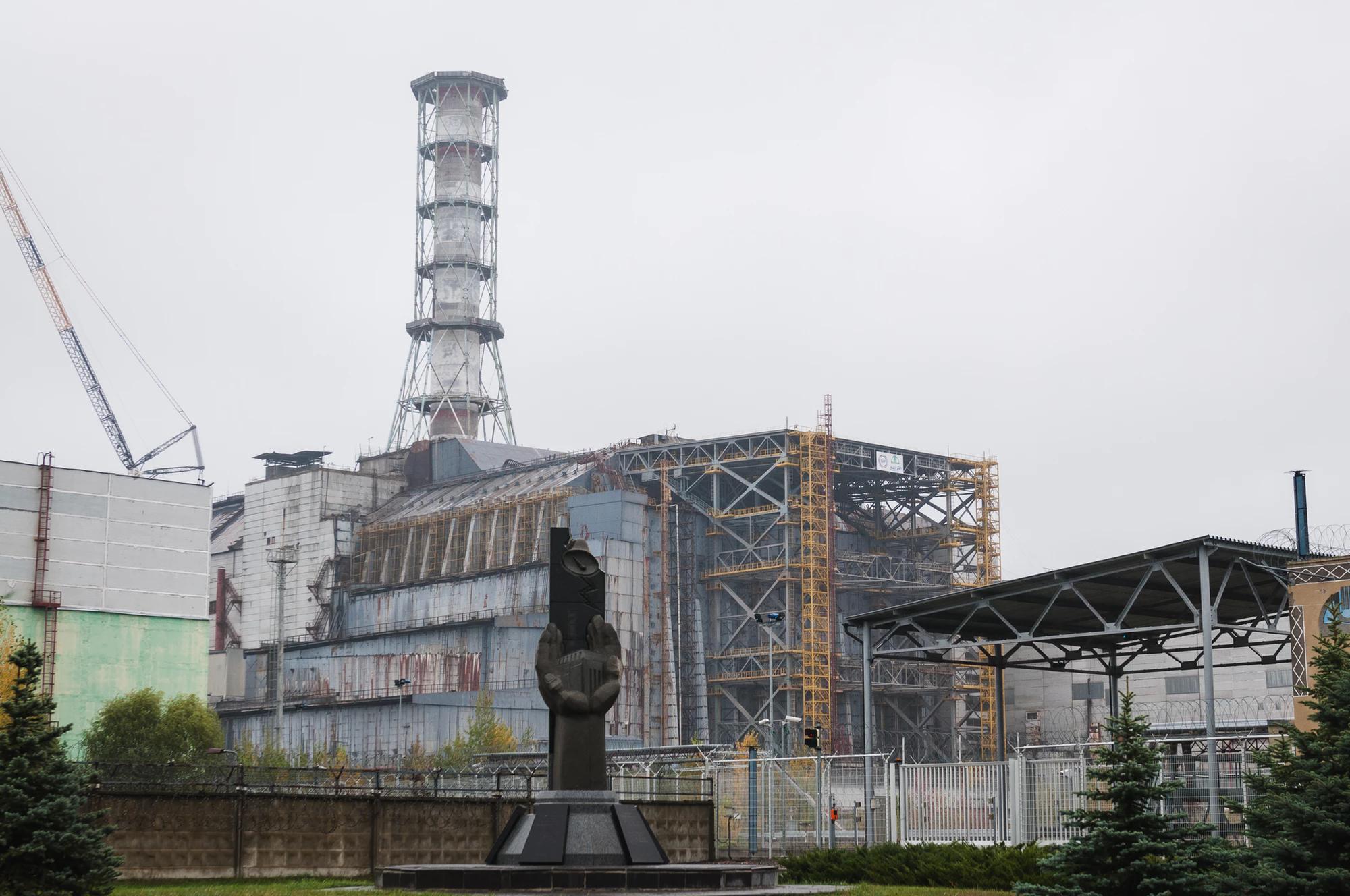
CHERNOBYL
TheChernobylNuclearPowerPlant,o�ciallyknownastheVILeninNuclearPowerStationduring theSovietera,beganconstructionin1970inaremoteregionnearUkraine’sswamp-�llednorthern border,15kilometersnorth-westofthesmalltownofChernobyl.Thedesolatelocationwaschosen becauseofitsrelativeproximitytoandsafedistancefromUkraine’scapital,areadywatersupply-the RiverPripyat-andtheexistingrailwaylinerunningfromOvrucinthewesttoChernigovintheeast Itwasthe�rstnuclearpowerstationevertobebuiltinthecountry,andwasconsideredtobethebest andmostreliableoftheSovietUnion’snuclearfacilitiesConcurrenttotheconstructionofthepower station,theSovietUnion’sninthAtomograd-Russianfor‘atomiccity’-namedPripyatwasbeing erected3kilometersaway,forthespeci�cpurposeofhousingtheambitiousstation’s50,000operators, builders,supportsta�andtheirfamiliesPripyatwasoneofthe‘youngest’citiesintheSovietUnion, withanaverageageofonly26.
by Andrew Leatherbarrow - Exposure
Tooverseethetitanicoperation,35-year-oldturbineexpertandloyalcommunistViktorBryukhanov waspluckedfromhispositionasDeputyChiefEngineerattheSlavyanskayathermalpowerstationin easternUkraine,andappointedasChernobyl’sDirector.Itseemsthathewasgenuinelylikedand respectedasaDirector,withoneoftheplant’soriginalDeputyChiefEngineerscommenting,“Heisa greatengineerIreallymeanit”Inhisnewcapacity,Bryukhanovwasresponsibleforoverseeing constructionofboththeplantandcity,andorganisingeverythingfromtherecruitmentofworkersto theprocurementofmachineryandmasonryBryukhanovworkedhardbut,despitehisearneste�orts, theconstructionsu�eredaplethoraofproblemstypicaloftheCommunistsystemThousandsoftons ofreinforcedconcreteweremissingfromorders,andspecialistequipmentwaseitherimpossibleto sourceorofpoorqualitywheniteventuallyarrived,forcinghimtoorderthemanufactureof replacementsinmakeshifton-siteworkshopsAlthoughthesecomplicationsputtheplant2years behindschedule,the�rstreactor-Unit1-wascommissionedonthe26thofNovember1977, followingmonthsoftestsThreemorereactorsfollowed:Unit2in1978,Unit3in1981,andUnit4in 1983.
Allfourreactorsweretherelativelynew,Soviet-designed‘ReaktorBolshoyMoshchnostiKanalnyy’ (RBMK)-1000,or‘HighPower,Channel-typeReactor’inEnglish,whichoutput1000Megawattsof electricalpowerviatwo500MWsteamturbogeneratorsTheRBMK-1000isagraphite-moderated, boilingwater-cooledreactor;anunusualandslightlyoutdatedcombinationthatwasdesignedinthe 1960stobepowerful,quick,cheapandeasytobuild,relativelysimpletomaintain,andtohavealong servicelifeEachreactormeasuresamassive7meterstallby118meterswideIn1986,14ofthistype wereinservice,whileanother8wereunderconstructionTwoofthesewerebeingbuiltatChernobyl onthenightoftheaccidentin1986,withUnit5expectedtobecompletedlaterthatyear.Thefour existingreactorstogetherprovided10%ofUkraine’selectricityatthetimeand,hadUnits5and6been completed,Chernobylwouldhavebeenthehighestcapacity,non-hydropowerstationintheworld Forreference,theworld’slargesthydroelectricpowerstationbyinstalledcapacityistheThreeGorges DaminChina,whichisratedforanincredible22,500MW
Nuclearreactorsuseaprocesscallednuclear�ssion-sometimescalled‘splittingtheatom’-togenerate electricityAllmatteriscomposedofatoms,andeachatomismostlyemptyspace,withatinycentreof protonsandneutronsjoinedtogethertoformanucleus,whichgivesanatommostofitsweight. Muchoftheleftoverspacewithinanatomisoccupiedbyelectronsorbitingthenucleusinthemiddle Thedi�erencesbetweenatomscomefromthedi�eringnumberofprotonsandneutronsinagiven nucleus.Forexample,theelementgoldcontains79protons,andisfamousforbeingheavy.Copper hasjust29protons,andisfarlessdensethangoldOxygenonlyhas8protonsEveryatomwillhave thesamenumberoforbitingelectronsasitdoesprotons,butatomsofthesameelementcanhave di�erentnumbersofneutrons.Thesedi�erentversionsofthesameelementareknownasisotopes. YoucouldthinkofisotopesasbeinglikeacarwithoptionalupgradesMercedeshasmanycars-the elements-intheirlineup,butthesecarsmayhaveoptionalextrastoadd:amorepowerfulengine; di�erentupholstery;anexpensivepaintjob.Thecarremainsthesamevehicle,butisnowinadi�erent formStableisotopes-thatis,isotopeswhichdonotundergospontaneousradioactivedecay-are calledstablenuclides,whileunstableisotopesarecollectivelyknownasradionuclidesor�ssion products.Theseradionuclidesarewasteproductsofthereactionandarehotandhighlytoxic.
TheRBMK,likealmostallcommercialnuclearreactors,usesuranium-whichhas92protons,making ittheheaviestnaturallyoccurringelement-asafuelsourceUraniumcontainsamere07%ofthe �ssionableisotopeuranium-235(92protonsand143neutrons),sothe190tonsoffuelinasecondgenerationRBMKreactorlikeChernobyl’sUnit4consistsofcheapandonlyslightlyenriched98% uranium-238and2%uranium-235,containedwithin1,661verticalpressuretubesDuringthenuclear reactioninsideareactorcore,fastneutronscollidewiththenucleiofanotheruranium-235atom, splittingitandcreatingenergyintheformofheat.Thisatomicsplitcreatesanadditional2or3 neutronsThesenewneutronswillthencollidewithmoreU-235fuel,splittinganotheruraniumatom
toformyetmoreneutrons,andsoonThisprocessiscalleda�ssionchainreaction,anditisthis reactionwhichcreatestheheatinanuclearreactorAtthesametime,additionalnewelementsinthe formofhot�ssionproductsarecreated.
Nuclearpowerharnessesthesameatomicreactionasanuclearbomb,butisdesignedtoensurethatit isphysicallyincapableofcausinganuclearexplosion,andinsteadcontrolsthereleaseofneutronsto generatetherequiredheatWhileapowerstation’sreactorcontainsbarely-enricheduraniumor plutoniumfuel,dispersedoveralargeareaandsurroundedbycontrolrodstorestrainthereaction,a nuclearbombisdesignedwiththespeci�cintentionofcausingthissamereactiontooccur instantaneouslyandwithfargreaterintensity,byusingexplosivestoforcetwohemispheresof90%+ enricheduraniumorplutoniumtogether.
Preventingaradioactivereleaseisthehighestpriorityatanynuclearfacility,sopowerstationsarebuilt andoperatedwithasafetyphilosophyof‘defenseindepth’Defenseindepthaimstoavoidaccidents byembracingasafetyculture,butalsoacceptsthatmechanical(andhuman)failuresareinevitable Anypossibleproblem-howeverunlucky-isthenanticipatedandfactoredintothedesignwith multipleredundanciesThegoal,therefore,istoprovidedepthtothesafetysystems,akintotheway RussiandollshaveseverallayersbeforereachingthecoredollWhenoneelementfails,thereisanother, andanother,andanotherthatstillfunctionsThe�rstbarrieristhefuelceramicpelletsthemselves, followedbyeachfuelrod’szirconiumalloycladdingInanordinarymoderncommercialnuclearplant, thenuclearcorewherethe�ssionreactiontakesplacewouldbecontainedinsidea‘pressurevessel’,an almostunbreakablemetalshieldenvelopingthereactor.Thisisthethirdbarrier.TheRBMKforgoesa conventionalpressurevesselandinsteadonlyusesreinforcedconcretearoundthesidesofthereactor, withaheavymetalplateatthetopandbottomAddingaproperpressurevessel,builttothestandards andcomplexityrequiredbytheRBMKdesign,wasestimatedtodoublethecostofeachreactor.The fourthand�nalbarrierisanair-tightcontainmentbuildingItiswellknownthatnuclearcontainment buildingsarevery,veryheavilyreinforced,withconcreteand/orsteelwallsoftenseveralmetersthick Theyarebuilttowithstandtheexternalimpactofanairlinercrashingintothemathundredsofmilesper-hour,buttheirotherpurposeistocontaintheunthinkablebreachofapressurevessel Unbelievably,theRBMK’saccompanyingreactorbuildingisinsu�cienttobelabelledasatrue containmentbuilding,presumablyaspartoffurthercostsavingmeasures.
TheRBMK’sstunningduallackofthemostcrucialcontainmentbarriersisaglaringomissionwhich shouldneverhavebeenconsidered,letalonedesigned,approvedandbuiltSelectSovietMinisterswere madeawareoftheseinadequaciesbeforethereactorswerechosen,butstilltheRBMKdesignwas selectedoverthecompeting‘VodaVodaEnergoReactor’(VVER,or‘Water-WaterPowerReactor’),a pressurisedwaterreactorwhichwassafer,butmoreexpensiveandmarginallylesspowerful ConventionalwisdomatthetimewasthattheRBMKcouldnevercausealarge-scaleaccident,because industrysafetyregulationswouldalwaysbeadheredto.Extrasafetymeasures,theydecided,were unnecessary
A�ssionreactionisenabledbywhatisknownasaneutronmoderator,which,inanRBMKreactor,is comprisedofverticalgraphiteblockssurroundingthefuelchannelsThisgraphiteslows-moderatesthespeedofneutronsmovinginthefuel,becauseslowedneutronsarefarmorelikelycollidewith uranium-235nucleiandsplitWhenplayinggolf,forexample,ifyourballisafewcentimetersfrom thehole,youdon’thititashardasyoupossiblycan,yougiveitaslowtaptothetargetIt’sthesame principlewithneutronsinareactorThemoreoftentheresultingatomicsplitoccurs,themorethe chainreactionsustainsitselfandthemoreenergyisproducedInotherwords,thegraphitemoderator createstherightenvironmentforachainreactionThinkofitasoxygeninaconventional�re:even withallthefuelintheworld,therewillbeno�amewithoutoxygen
Usinggraphiteasamoderatorcanbehighlydangerous,asitmeansthatthenuclearreactionwill continue-orevenincrease-intheabsenceofcoolingwaterorthepresenceofsteampockets(called ‘voids’).Thisisknownasapositivevoidcoe�cientanditspresenceinareactorisindicativeofvery poordesignGraphitemoderatedreactorswereusedintheUSAinthe1950sforresearchand plutoniumproduction,buttheAmericanssoonrealisedtheirsafetydisadvantagesAlmostallwestern nuclearplantsnowuseeitherPressurisedWaterReactors(PWRs)orBoilingWaterReactors(BWRs), whichbothusewaterasamoderatorandcoolantInthesedesigns,thewaterthatispumpedintothe reactorascoolantisthesamewaterthatisenablingthechainreactionasamoderatorThus,ifthe watersupplyisstopped,�ssionwillceasebecausethechainreactioncannotbesustained;amuchsafer designFewcommercialreactordesignsstilluseagraphitemoderatorOtherthantheRBMKandits derivative,theEGP-6,Britain’sAdvancedGas-CooledReactor(AGR)designistheonlyother graphite-moderatedreactorincurrentuse.Itwillsoonbejoinedbyanewtypeofexperimentalreactor atChina’sShidaoBayNuclearPowerPlant,whichiscurrentlyunderconstructionTheplantwill housetwographite-moderated‘HighTemperatureReactor-Pebble-bedModules’reactors,whichare expectedtobeginoperationin2017.
Becauseoftheextremeheat�ssiongenerates,thereactorcoremustbekeptcoolatallcosts.Thisis particularlyimportantwithanRBMK,whichoperatesatan“astonishinglyhightemperature,”relative tootherreactortypes,of500°Cwithhotspotsofupto700°,accordingtoBritishnuclearexpertDr EricVoice.Afewdi�erentkindsofcoolantareusedindi�erentreactors,fromgastoairtoliquid metaltosalt,butChernobyl’susesthesameasmostotherreactors:lightwater,meaningitisjust regularwaterTheplantwasoriginallygoingtobe�ttedwithgas-cooledreactors,butthiswas eventuallychangedbecauseofashortageofthenecessaryequipment.Waterispumpedintothe bottomofthereactorathighpressure(1000psi,or65atmospheres),whereitboilsandpassesup,out ofthereactorandthroughacondensatorwhichseparatessteamfromwaterAllremainingwateris pushedthroughanotherpumpandfedbackintothereactor.Thesteam,meanwhile,entersasteam turbine,whichturnsandgenerateselectricityEachRBMKreactorproduces5,800tonsofsteamper hourHavingpassedthroughthisturbogenerator,thesteamiscondensedbackintowaterandfedback tothepumps,whereitbeginsitscycleagain.
There’sonemajorshortcominginherenttousingthismethodofcooling.UnlikeinatypicalPWR,the waterenteringthereactoristhesamewaterthatpassesthroughthecoolingpumpsandthenassteam throughtheturbines,meaninghighlyirradiatedwaterispresentinallareasofthesystemAPWRuses aheatexchangertopassheatfromthereactorwatertoclean,lowerpressurewater,allowingthe turbinestoremainfreeofcontaminationThisisbetterforsafety,maintenanceanddisposalAsecond problemisthatsteamisallowedtoforminthecore,makingdangeroussteamvoidsmorelikely,and furtherincreasingthechancesofapositivevoidcoe�cient.Inordinaryboilingwaterreactors,which usewaterasbothacoolantandmoderatorlikeinaPWR,thiswouldnotbesuchabigissue,butina graphite-moderatedBWRitis
Tocontrolthereleaseofenergybyanuclearreactor,‘controlrods’areusedRBMKcontrolrodsare long,thincylinders,composedmostlyofneutron-absorbingboroncarbidetohinderthereaction.The tipsofeachrodaremadeofgraphitetopreventcoolingwater(whichisalsoaneutronabsorber)from enteringthespacetherod’sboronhadoccupiedasitiswithdrawnfromthecore,inorderforthat sectiontohaveagreaterimpactuponreactivitywhenreinserted.Chernobyl’s211controlrods descenddownintothecorefromaboveasnecessary,andareaidedintheirrolebyanextra24special shortened‘absorberrods’Theseabsorberrodsensureanevendistributionofpoweracrosstheentire widthofthecorebyinsertingupwardsfrombelow.Themorecontrolrodsthatareinsertedintothe reactorcore,andthefurthertheypenetrate,thelowerthelevelsofpowerwillbeConversely,fewer rodsequalsmorepowerEverycontrolrodcanbeinsertedtogether,penetratingasnearorasfarasthe
operatorwishes,ortheycanbedisconnectedandinsertedingroups,dependingonrequirementsBy WesternstandardstheRBMKcontrolrodsareincrediblyslow,taking18-21secondstofullyinsert fromtheiruppermostposition.Some,likeCanada’sCANDUreactor,cantakeaslittleas1second.
ItisnotwellknownthattherewasasevereaccidentatChernobylbeforethedisasterof1986,which resultedinthepartialcoremeltdownofUnit1TheincidentoccurredonSeptember9th,1982,and remainedsecretforseveralyearsafterwardsDetailedandreliablereportsaredi�culttocomeby (especiallyinEnglish),butitseemsacoolantwatercontrolvalvewasclosed,leadingtooverheatingofa waterchannelandpartialdamageofthefuelassemblyandgraphiteinsidethereactorAclassi�ed KGBreportfromthenextdaywordedit:“Inconnectionwiththeplannedoverhaulofthe1stfuel unitoftheChernobylnuclearpowerplant,whichisscheduledtobecompletedon13September, 1982,atrialrunofthereactorwasperformedon9September1982Whenitspowerwasincreasedto 20%,therewasabreakinoneofthe1640pressurechannels/loadedfuelassembliesAtthesametime, thecolumnwherethefuelassembliesarelocatedbroke.Inaddition,thegraphitestackbecame partiallywet”Thisresultedinfuelandgraphitebeingwashedoutthroughthepipesand�ssion productsbeingventedfromthechimney,whichinturnpreventedcoolantfromproperlyreachingthe reactor,leadingtothepartialmeltdown.
Whatmakesthisaccidentstandoutaretheresponsesthatfollowed:operatorswereunsurewhatwas happeningforalongtime,andignoredwarningalarmsforalmosthalfanhour,thentheKGB investigationintotheaccidentseemedtoignorenegligentactionsofplantsta�(stoppingthe�owof coolantonpurpose).The�ndingsoftwoseparateorganisationsmeasuringradioactivecontamination outwiththeplantwildlydi�ered,too,withagovernmentnuclearindustrycommission�ndingalmost nocontaminationatall,whileateamofbiophysicistsfromtheInstituteofNuclearResearchfrom Ukraine’sAcademyofSciencefoundradiation“hundredsoftimeshigherthanpermissiblelevels”.To compoundtheperplexity,twosenior�gures,whowouldlateranalysethe1986disaster,didnotagree withtheo�cialdescriptionofeventseitherFortheirpart,thereactoroperatorsondutythatday deniedanywrongdoing.“Asaneyewitnessofthisaccidentandoneofthoseinvolvedineliminationof itsconsequences,Idon’thavemuchtoadd[to]theversionofNIKIET[theScienti�cResearchand DesignInstituteofPowerandTechnology]thatblamedtheChernobylATSengineerforstopping completely[the]watersupplyintothe[reactor,exceptthatit]hasnevergrownintoanythingelsebuta version,”writesNikolaiVKarpan,aseniorengineerwhoworkedatChernobylfrom1979to1989 “Boththeforemanandthewholeteamofservicementhatcarriedout�owrateadjustmentsthatday havebeenrepeatedlydenyingtheerrorin�icteduponthem.Onthatdaytheyworkedintheusualway, instrictcompliancewiththeregulations,accordingtowhichthataguideplatewastobeinstalledon theregulatorthatwouldmechanicallypreventcompletestoppingofwatersupplyintothechannel”It islikelythata�awinthereactordesignor-moreprobable-poormanufacturingqualitywasidenti�ed asaprincipalcauseoftheaccident,butthepoliticianschosetogowiththeeasyoptionandblamean operatingengineerinsteadOneinstanceofhumanerrorisamorepalatableanswerthan acknowledgingthatyourbrandnewnuclearreactor,developedandbuiltatenormousexpense,and alreadyoperatingattwootherexistingplants,hasa�awinitsdesignThisuno�cialversionofevents wassupportedbytheplant’sResearchSupervisor,whoconductedaninvestigationofhisownand reported:“Itturnedoutthatthezirconiumchannelpipesweredestroyedduetoresidualinternalstress intheirwallsThemanufacturingplanthad,onitsowninitiative,changedtheproductionprocessof channelpipes,andthis‘novelty’resultedintheaccidentinthereactor”
EvenbeforetheChernobylincidentof1982,therewasanotherseriousaccidentinvolvingtheRBMK designattheLeningradNuclearPowerPlantinNovember1975,whenitsUnit1su�eredapartial meltdownDetailedinformationismorechallengingto�ndthanthe1982Chernobylaccident,but ViktorMDmitriev,aRussiannuclearengineerfromtheInstituteofNuclearPowerOperationsin Moscow,hasawebpageexplainingwhathappened.Theaccidentbaressomeremarkablesimilaritiesto Chernobyl’s1986disasterLeningrad’sUnit1wasrestartingafterroutinemaintenanceandhad
Chernobyl by Andrew Leatherbarrow - Exposure
reached800MWwhenoperatorsdisconnectedoneofitstwoturbinesduetoafaultTokeepthe reactorstable,powerwasreducedto500MWandthentheeveningshifthandedoverthereignstothe nightshift.At2am,someoneinthecontrolroomdisconnectedtheonlyremainingturbineby accident,trippingtheemergencycomputersystemandautomaticallyshuttingdownthereactor Reactorpoisoningbegan(I’llexplainthisinmoredetaillater),leavingtheoperatorswithachoiceof battlingthereactorbacktofullpower-unwise-orallowingittoshutdown-moresensible,butthere wouldberepercussionsforallowingittohappenatallTheychose-justaswithChernobyl-toraise thepowerItdidn’tgowell“Duringrisingtopoweraftershutdown,withoutanyoperator’sactions tochangereactivity(withoutliftinganyrods)thereactorwouldsuddenlyreduceaccelerationtimeby itself,ie,inadvertentlyaccelerate;inotherwords,itwouldtrytoexplode,”saysVIBoretz,atrainee fromChernobylwhohappenedtobeonthisshift“Thereactoraccelerationwasstoppedtwicebythe emergencyprotectionsystem[infact,theemergencyprotectionwastriggeredmorethantwice,both onexcessofpowerandonspeedofitsgrowth-ViktorMDmitriev]Attemptsoftheoperatorto reducecapacitygrowthvelocitybystandardmethods,loweringatthesametimeagroupofmanually controlledrods,plusfourautomaticallycontrolledones,failed,andrisingtopowerwasincreasing.It wasonlystoppedbytriggeringtheemergencyprotectionsystem”Thereactoreventuallyreacheda powerof1,720MW-almosttwiceitsratedcapacity-beforeitwasbroughtundercontrol
Agovernmentcommissionintotheaccidentfoundseriousfaultswiththedesign,andin1976 recommendedthatthevoidcoe�cientbelowered,thecontrolroddesignbealtered,andfor‘fastactingemergencyprotection’tobeinstalledNewdesignsweredrawnupfortherods,butwerenever installedonanyreactorsOnOctober16th,1981,areportwassubmittedtotheKGBhighlighting severalconcernsoverthequalityofconstructionandequipmentatChernobyl.Itstatedthattherehad been29emergencyshutdownsduringtheplant’s�rst4yearsofoperation-8ofwhichwerecausedby personnelerrors,therestfromtechnicalfaults-andthat“controlequipmentdoesnotmeetthe requirementsforreliability”.ThesefaultshadbeenbroughttotheattentionoftheMinistryofPower andElectri�cationandthedesigninstituteresponsibleforthereactor“severaltimes”bythedateofthe report,accordingtotheKGB,yetnothinghadbeendone
Inlate1983,Lithuania’sbrandnewIgnalinaPowerStationbegancommissiontestingits�rstRBMK reactorandsoonencounteredaproblem:controlrodsenteringthereactortogethercausedapower surgeThisisbasicallywhatcausedtheChernobyldisasterafewyearslaterAtIgnalina,thefuelwas brandnew,thereactorwasstable,andtherodstravelleddowntheentireheightofthecore,allowing borontobeintroducedandthereactiontobebroughtbackundercontrol.Thiscriticaldiscoverywas passedaroundtherelevantnuclearMinistriesandInstitutes,butagainnothingchangedAnother KGBreportdatingfromOctober1984highlightedcomplicationswiththecoolingsystemexperienced byUnit1.ThenecessaryinformationhadbeensenttotherelevantMinistriesatthetime,“butevenon Units5and6thatarenow[in1984]underconstruction,thesecommentsarenottakenintoaccount” Inlightofalltheserepeated,wilfulexamplesofnegligence,I�ndmyselfagreeinginmanywayswith Chernobyl’sDeputyChiefEngineerAnatolyDyatlov,whenhesaidyearslaterthat,“theRBMK reactorwascondemnedtoexplode”

FASCINATION
Ican’trememberwhenI�rstbecameinterestedinChernobyl.Asachild,Irememberoccasionally hearingsnippetsofstoriesaboutthecityabandonedafteranuclearmeltdownIhadnoideawhata nuclearmeltdownwas,buttoachildthephrasesoundedlikesomethingoutofscience�ctionAs �ctionalasitmayhavesounded,itwasn’ttheaccidentthatpiquedmyinterest,itwasthatanactual, real-lifecitywasdesertedsomewhereTheideablewmymindIhaveoftenimaginedwhatitwouldbe liketowalkthroughsuchaplace,tobesomewheresofamiliarandyetsoempty,towonderwhatitwas likebeforewhatevertragedyhadbefallenit
Itwasn’tuntilIattendeduniversityin2005andsawacollectionofphotographstakenbyabiker ridingthroughtheExclusionZone(althoughthisstoryturnedouttobeafabrication),longbefore goingtherewaspopular,thatIbecamefascinatedbywhathappenedIsoughtoutasmany photographsoftheaccidentasIcould,andthatwaswhentheiconicsilhouetteofChernobyl’s ventilationstackbecameingrainedintomymemoryIn2007,thedark,sprawlingPCvideogame ‘Stalker:ShadowofChernobyl’wasreleased,allowingmetovisitandexplore-inamannerofspeaking -theplacesIhadseenandreadabout.Thegameissetinanalternatetimelinewherestrange, supernaturalanomalieshaveappearedacrosstheExclusionZonefollowingtheChernobylaccident Whileithasitsshortcomings,theUkrainiandevelopersrecreatedmanyrecognisablelocationswith photo-perfectaccuracyandwasdrippingwithatmosphere.ThemoreIplayed,themoreIlongedtogo thereandseetheplantforrealStill,asastudent,alotwashappeninginmylifeandIsoonmovedon toother,equallyfascinatingthingsOvertheyears,Ireturnedtothestoryofwhathappenedafew times,andeachtimeIfeltagreaterdesiretolearnmore
FukushimachangedeverythingOnMarch11th,2011,at14:46JST,amagnitude90earthquake-the 5thstrongesteverrecorded-occurred70kilometerseastoftheOshikaPeninsulaofTōhoku,Japan
Chernobyl by Andrew Leatherbarrow - Exposure
Theunderseaquakecausedatsunamiashighas40meterstohitthecoast,devastatingeverythinginits pathandtravellingupto10kminlandOver16,000peopleperishedintheensuingchaos,anda further400,000losttheirhomesafteroveronemillionbuildingsweredamagedordestroyedThe WorldBank’sestimatedeconomiccostwasUS$235billion,makingitthecostliestnaturaldisasterin worldhistoryThetsunamioverwhelmedtheinadequate�ooddefensesofthe40yearoldFukushima Daiichinuclearplantwitheaseandsubmergedtheentiresite,includingitsbackupdieselgenerators Theinstanttheearthquakehadbeenregisteredo�shore,Fukushima’sthreeactivereactorsshutdown andcommenceddecayheatcoolingviatheiremergencydieselgeneratorsNowthosegeneratorswere underwater,useless,andthecountrywasinturmoilFiretrucksfoughttheirwayalongroadsupturned bytheearthquakeandtriedtoconnecttheirhosestothereactorpumps,onlyto�ndthatnoadaptor fortheconnectionwasavailableon-siteDespitethevaliante�ortsofFukushima’ssta�,allthree reactorsmelteddownandtheircontainmentbuildingswerebadlydamagedbyhydrogenexplosionsIt hasbecometheworld’ssecondworstnucleardisaster,andtheonlyaccidenttoberateda7onthe7pointInternationalNuclearEventScaleotherthanChernobylitselfFukushima’sotherthreereactors wereo�ineforrefuellingatthetimeoftheaccident,otherwisewhoknowswhatwouldhave happened AfterthatfatefultsunamioverrantheJapaneseplant,Isatgluedtomycomputer,trawlingthenetfor everysnippetofnewinformationChillingphone-videos,uploadedtoYouTubebysurvivorsofthe unstoppable,encroachingwallofwater,werewatchedwithwideeyes,overandoveragainItwiped outeverythinginitspath.Vehicles,fromsimplebicyclestomonolithic�shingvessels,weretossed inlandlikepaper;wholetownswere�attenedandpushedinland;almost16,000men,womenand childrenlosttheirlivesAsthesituationatFukushimaDaiichiworsenedbythehour,residentsof onlineforumsandblogsspeculatedaboutwhatwouldhappen.WouldthisbeanotherChernobyl? Armchairnuclearexpertsappearedfromnowhere,o�eringopinionsonnuclearsafetysystemsand howJapanwaswellpreparedforsuchanevent
Asitturnedout,theonepersonwhoappearedtometobethemostwell-informedwaswrongwhen hesaidthereactorswereborderlineindestructible,andthateventhistsunamiwouldn’tcausea meltdownLikemanyothers,Iwonderedwhattheimplicationswouldbefortheenvironmentandthe residentslivingnearbyIrealisedthat-inspiteofmyinterest-Ididn’treally,fundamentally understandhownuclearreactorsworked,norhowgoodtheirsafetysystemswere.Thelikesof Greenpeaceareloudanduncompromisingintheirviewthatnuclearpowerisunsafeandproduces damaging,non-disposablewasteAdvocatesreplythatitcausesproportionallyfarlessdeathsthancoal, whichaccountsfor3timestheamountofelectricitygeneratedworldwideasnuclear;that�yash emittedbyacoalpowerplantcarries100timesmoreradiationintothesurroundingenvironmentthan anuclearpowerplantproducingthesameamountofenergy;indeed,thatnucleargeneratesmore cleanelectricitythananyotherwidelycommercialisedformofenergy.
Sowhichisit?There’ssomuchfearandpropagandasurroundingnuclearpowerthatit’salmost impossibletoknowwhattobelievewhenyou’reuninformedIwantedtolearnthetruthformyself, andthat’swhenIbecamemoreseriousaboutlearningthesecretsofnuclearpoweranditspotentialfor harm.Whatbettereventtolearnfromthantheworstman-madedisasterinhistory?Iwantedtoknow whathadgonewrongatChernobyl,howithadhappened,whowasresponsible,howitwasresolved, andwhatlessonswerelearnedFirst,IwatchedasmanydocumentariesasIcould�ndSomeappeared tobeobjectiveandinformative,otherswerespeculative-evenbrazen-withtheirinventionof‘facts’ aboutwhathappenedIcametorealisethatalotoffalseinformationsurroundsthislegendarynuclear accident;everyonehasheardofit,butfewknowwhatreallyhappenedThisblurringofinformation onlymadememoredeterminedtolearnthetruth.
InlateAugust2011,Ihappenedtobebrowsingaphotographyforumforthe�rsttimeinmonths, whenIsawathreadadvertisingatriptovisittheExclusionZoneIthadbeenfullybooked,butas crunchtimewasnearingtherewereahandfulofdrop-outs.ScheduledtodepartonOctober8th,it wasmereweeksawayIknewthattourgroupso�eredguidestoshowcuriousvisitorsaround,though theywereonholdbecauseofvandalism,butthatthesetoursfollowedanapproved,supervisedroute Thiswouldn’tbelikethat:thegroupwasexpectingtohaveunrestrictedaccesstoPripyat.Ididn’t knowanyonegoing,butIdecidedthenandtherethat–26-years-old,pennilessandunemployed–I hadtojointhatexpeditionAt£425,plustransporttoUkraineandeveningmeals,thecostwasless thanIexpected;anachievabletarget.Ofcourse,thecostof�rstgettingtoLondonfromwhereIlived inAberdeenshire,Scotland,andthen�yingtoKievandbackdoubledthepricetosomewherecloseto £1000.Themoneywouldcoverbuses,accommodation,guides,breakfasts,and–mostcrucial,I suspect–bribes.
HowwasIgoingtocomeupwith£1000injustafewweeks?Idecidedtosellmy�rstproperelectric guitar,abeautifultransparentredIbanezJoeSatrianiSignatureJS-100,andanexcellentNikon 105mmmacrolensIusednowherenearenoughtojustifyits£650valueIwassadtoseetheguitargo Itwasthe�rstinstrumentIhadeverloved,butI’dreplaceditayearearlierbya30thAnniversary SchecterC-1,andthelensIusedperhapsonceeveryfewmonthsIputthembothonEbayTwo Africanscammersandseveralwastedweekslater,andIhadthemoneyIneededthankstoagenerous loanfrommyparentsmakinguptheshortfall.
Thegroupwastoassembleandseto�onOctober8thfromLutonAirportoutsideLondon,then�y toBorispolAirportnearKievinUkraine,wherewe’dmeetupwithmorepeoplefromaroundEurope FirstIhadtoreachLondonfromtheoldstonemillhousewhereIlivedinthecountrysidenorthof Aberdeen,aboutasfarawayfromLondonasyoucangetinBritainFacedwiththechoiceofahellish, twelve-hourbusmarathonoratwo-and-a-halfhourrailwayjauntdowntoEdinburgh,followedbyan overnightsleeperexpresstoLondon,IchosethetrainI’dwantedtotravelonasleepertraineversinceI wasaboy.Itsoundedsoadventurous(MurderOnTheOrientExpress,anyone?)andhadtheadded bene�tofgettingaproperrest,whichjustwouldn’thappenonthecramped,uncomfortablebus
OnFridayeveningmyfatherdrivesmetothenearestbusstop,�vemilesfromhome,andbidsme farewell.Onehourand50kilometerslaterIwalkintoAberdeen’selegantVictorianstation,withits recentlyrefurbishedwroughtironandglassceiling,andboardthe�rstofmytwotrainsThejourney downScotland’seastcoastisuneventful,andIsooncan’tseeanythinginthewindowsexceptmyown re�ection,soIreclineinmyseat,pulloutmyphoneandloadupMinecraft:PocketEditionItcame outtoday,andforsomestrangereasonI’mexcitedattheprospectofbecomingthe�rstpersontoever playMinecraftatChernobylHavingcrossedthemajesticForthRailBridgeintotaldarkness,the�rst legofmyjourneyendsatEdinburghWaverleyIt’s11pmIdisembarkand�ndmynexttrainsittingin aquietcornerattheoppositeendofthestation,whereIcheckwiththeuniformedconductorthatit’s goingtoLondon Ionceboardeda9-carVirginPendalinofortheshort25kilometerhopfromPrestontoLancaster, onlytorealiseafterhalfanhourthatwehadn’tstopped.Uponbeingasked,theunimpressed conductorstruggledtomaintainhispokerfacewhileinformingmeIwasonanon-stopexpressto Glasgow-almost300kilometersawayOhTheydivertedthetraintomakeabriefstophalfwayat Carlisle,allforme.
Chernobyl by Andrew Leatherbarrow - Exposure
Nottoday,shereassuresme“We’refulluptonight”I�ndmycabinandopenthedoorTheother chapisn’thereyetso,childishly,Iclaimthetopbunkasmyown,plantingmybagdownlikea�ag Timepassesbutnobodyelsearrives,andaswe’reabouttoleave,thesameladyknocksonthedoor, pokesherheadinanddeclareshemustnotbecomingI’llhavethecrampedcompartmenttomyself, althoughIsoondiscoverthatsleepingonatrainisn’tsoeasyItconstantlyrattlesandrolls,stopsand starts,asIspeedsouthtowardsthecapital.
It’s4ambeforeIknowit,andthetrainiseasingintoLondon.I’mcoldandtired,butafterafrigidwalk betweenstationsI’msoononthenexttwohourtraintoGatwickAirportHavingtravelledthe farthesttogethere,I’malsothe�rstofthegrouptoarrive,butby9amothersarestartingtoappearI approachtheassembledmenandwomenandintroducemyself.It’sniceto�nallyputfacestothe namesofthepeopleI‘vebeentalkingtoforthelastcoupleofweeksImeetalotofgreatpeopletoday, butinparticularImeetDanny,KatieandDawidThefourofuswillsticktogetherfortherestofour journey. Adisinterestedannouncerinformsusthatourplaneisreadyforboarding,andwewalkoutacrossthe tarmactothewaitingUkraineInternationalAirlinesAirbusA320Itrytokeepupacalmfaçade,but insideI‘mpanicking;I’veonly�owntwicebefore-atnight-andhateditThepossibilityofbeingina planecrash,powerlesstopreventwhat’sabouttohappen,hasalwaysterri�edmeandisaroutine nightmareofmineAwindowseatbehindtheport-sidewinggivesmeanexcellentview,butmyphone isabetterdistractionfrommynervesuntilthe�ightattendantordersallgadgetstobeswitchedo�I closemyeyestoblockoutmysurroundingsasI’mforcedbackintomyseatbythejet’spowerful enginesIt’sasthrillingyetterrifyingasIremember
TheviewfromaplaneisbetterthanIeverimagined;seeingtheworldfromthisheightforthe�rst timemakesmerealisehowtrulyinsigni�cantweallare.Ispendthe�ighttryinghardtoguesswhere wearefromvisiblecoastlines,andequallyhardtryingnottothinkaboutthe35,000feetbetweenme andthegroundTheaircraftbeginsitsbumpydescentthroughdarkgreycloudsandintoBorispol Airportinlateafternoon,afterfourandahalfhoursintheairIt’sovercastandraining,butIdon’t care-I’mbackonsolidgroundandcanforgetmyfearof�yingforthetimebeingIt’sobviousour groupstandsoutasassoonasweentertheterminal,peopleallaroundusarestaringWe’vebeen instructedaheadoftimethatundernocircumstancesarewetotelltheairportsta�atBorispolwhy we ’vecometoUkraineInstead,wesaywe’retouristsonaphotographytripTheskinny,blank-faced manintheboothstaresatme,skepticalDoallforeignerscometoUkraineforChernobyl?Idoubtit, butI�ashhimabrief,innocentsmile,justincaseApparently,iftheyknewourtrueintentionsthere’s achancewewouldn’tbeallowedintothecountry,thoughI’mnotsurewhy.
WehaveafewhourstokillAbuswillpickusupat8pm,butuntilthenwe’refreetopassthetime Afterexchangingsomecurrency,IjoinDanny,Katie,DawidandafriendlyguynamedJoshinasearch forfood.Likethegormlesstouristsweare,wesettleonthe�rstfamiliarsite-asmall,American-style restaurantinthemainterminalbuilding,deckedoutlikeaclassic50sdinerThewallsarepaperedwith oldblackandwhitephotographsofNewYork,complementedbyhangingprintsadvertisingCoca ColaThemenuisinthestyleofafrontpageofTheTimesnewspaperWe’refamished,butsince noneofusapartfromDawidspeakorreadtheslightestbitofUkrainian,andthewaitressdoesn’t speakorreadEnglish,weeachsettleforteaIguessteaisuniversal
Sippingourpipinghotgreentea,mynewfriendsandIchataboutChernobyl,ourcameragear,where we ’reallfrom,andhowexcitedwearetobehere.Thetime�iesby,andbeforelongwe’reboardingour coachtothethousand-year-oldcentralcityofBilaTserkva80kmaway,wherewe’llspendthenight
Chernobyl by Andrew Leatherbarrow - Exposure
beforepushingontoanICBMmuseuminthesouthWearriveatBilaTserkvawithoutincidentby 11pm,theonlynotableviewonourdarkenedapproachtothehotelisanintriguing�oodlitindustrial site.Afterstandingaroundinahotellobbyfor20minuteswhileourguideshavealengthydiscussion withhotelsta�,we’redirectedupamarble-and-stained-glassstaircaseIgettheimpressiontheydidn’t knowwewerecomingOnthetop�oorweagain�ndourselveswithnodirection,untilDawidcomes totherescueandexplainsthesituationthroughamixtureofhandgesturesandPolishtoacleaning ladyOnceeveryonehas,atlast,droppedtheirbelongingsintheirroomsandexploredthebuilding (theroofaccess,ournatural�rstportofcall,islocked),acollectivedecisionismadetoretiretothe hotelpub. Collective,thatis,exceptforme.I’mastiredaseveryone,butIdidn’ttravelallthiswaytostand aroundandgetdrunk-IwanttoexploreDawidagreestoaccompanymeaftersomebadgering,sowe eachgrabatripodandcameraandheadoutintothenightOurhotelliesonthenorthernedgeofa well-litintersectionalongwithacoupleofshopsandrestaurants,butbeyonditthestreetlightsthin out,leavinglongstretchesofovergrownsidewalkandpotholedroadindarknessDawidandIsaylittle asweretracemymemorisedroutetotheindustrialsitewepassedearlierAlongtheway,Iencounter my�rstunexpectedsight-straydogs.We’veonlybeenwalkingfortenminutesbutalreadytwoor threehavewalkedpast,ignoringusontheirblithenightwanderMaybethiswouldn’tbesounusualto some,butstraydogsjustaren’tsomethingyouseeinthenorthofScotlandTocounterthedogs,it isn’tmuchlongerbeforeIencountermy�rstexpectedsight-aLadaRiva;oneofthemosticonic machinesoftheSovietUnion
Thewhitemainbuildingoftheindustrialsitelookslikeagrainsilo,comprisedoftwosetsoftwelve silosseparatedbyatallbuildinginthemiddleandtwohugesilosatthefarend,allconnectedbya �imsy-lookinghorizontalsection.DawidandIphotographitfromthetheshadowofatree,tryingto keepoutofsightofthemaninanex-armytrucksittingoutfrontWedon’thangaroundlong,only movingalittlefurtherdowntheroadtophotographthesite’sboilerplantbeforeheadingbacktothe hoteltosleep.
TheStrategicMissileForcesMuseumwasonceatopsecretSovietmissilebaseusedtohousethecoldlaunchedSS-24“Scalpel”silo-basedmissileOndisplay,among2000otheritemsofinterest,isthe35meterlong,muchfearedSS-18“Satan”intercontinentalballisticmissileItwasthehighestyield nuclearmissileeverdeveloped,at20Megatons,andfarmorepowerfulthananyICBMinservice todayForcomparison,theHiroshimabombwas‘only’16KilotonstotheSS-18’s20,000Kilotons, whichhasanareaofdestructionof800squaremilesFollowingthecollapseoftheSovietUnion,all missilebasesinUkraineweredemolishedaspartofthe‘StrategicArmsReductionTreaty’(START) agreementwiththeUSAAllexceptthisone,whichwasturnedintoamuseumThebaseisfun-I explorea12-storeymissilecommandmoduleburied40metersunderground,photographlotsof exoticmilitaryvehiclesandseesomeimpressivemissiletechnologyupclose,butitrainstheentiretime andisn’twhatanyofustravelledallthiswaytoUkrainetoseeWeareitchingtovisitChernobyl
Wedepartfromthemuseumataround2:30pmandbegintheten-hourslogtowardsthetownof Slavutych,whichwillserveasourbaseofoperationsoverthenextfewdaysAsthelightoutsidegrows dim,I�ghtthetediumbytakinglight-trailsphotographsofpassingvehiclesthroughthewindow Soon,equallybored,almosteveryoneonthebusjoinsinWepassthroughKiev,notreallyseeing anythingapartfromdistorted,rain-soakedshapesandtheenormous,�oodlit,102-metertall Motherlandstatue,standingguardatopthecity’stallesthillBeyondKiev’scityboundaries,thedeadstraight,well-wornroadispitchblackTherearenostreetlightsandothervehiclesarefewandfar between;allIseebeyondthebus’sownfaintglowareghostlysilhouettesofacorridoroftreesLacking anythingbettertodo,IburnanhourorsoexplainingexactlywhathappenedatChernobyltoDanny,
KatieandDawidAtonepointduringourjourney,thebusappearstospontaneouslycatch�re, alarmingeveryoneexceptthedriverWesmellburningandseesmokeinthecabin,buthe‘sunphased andkeepsdrivingasifthisisperfectlynormal.I’mbeginningtoappreciatehownonchalant Ukrainiansare
Chernobyl by Andrew Leatherbarrow - Exposure
Aftertenlifeless,interminablehours,wearriveinSlavutychErected50kilometerseastofChernobyl, Slavutychbeganconstructionin1986shortlyaftertheaccident,speci�callytohouseChernobyl’s workersandtheirfamiliesafterPripyatwasrendereduninhabitable.ItsnamecomesfromtheOld SlavicnameforthenearbyDnieperRiverThetownishometo25,000inhabitants,anditseconomic andsocialsituationisstillheavilyin�uencedbythepowerplantandotherChernobylzone installations,becausemostoftheresidentseitherworkedorstillworkthere.Itsconstructioninvolved architectsfrom8di�erentSovietrepublics,and,asaresult,thecityissplitinto8distinctareas-each withtheirowndi�erentstylesofarchitectureandcolourschemesDespitebeingverymodernin comparisontootherplacesinUkraine,therehasbeenahighrateofunemploymentsincethepower stationshutdownitslastreactorinDecember2000,leavingonly3,000residentsemployedthere
We’retoldtosplitourselvesintogroups,somyfriendsandIelecttogeta4-bedroomplacetogether ThebuscreepsaroundSlavutychinthedark,droppinggroupso�hereandthereuntilit’sourturn We’redepositedoutsidea5-storeybuilding,whereashort,plump,dark-hairedwomaninherearly40s iswaitingShegesturesforustofollow,thenleadsthewayupstairstoa�ve-roomapartmentonthe top�oorIt’sherownhome!Dawid,beingPolish,canunderstandbitsandpiecesofUkrainian,and infersthatshe’srentingitouttousasawayofmakingalittleextramoney,andislivingwithher childreninhermother’s�atacrossthehallforthedurationofourstayIt’salovelylittleplace,very homelyandwarm,withfamilyphotographsliningthewallsandsofttoysinthebedrooms;farmore comfortableandwelcomingthananyhotel.Ifeelguiltyaboutthearrangement,buttrytoreassure myselfthatit’stothebene�tofallinvolvedWesettleourselvesin,makeseveralcupsofherdelicious teaandchatforawhile,butsoondrifto�toourbedsinanticipationofthedaysahead
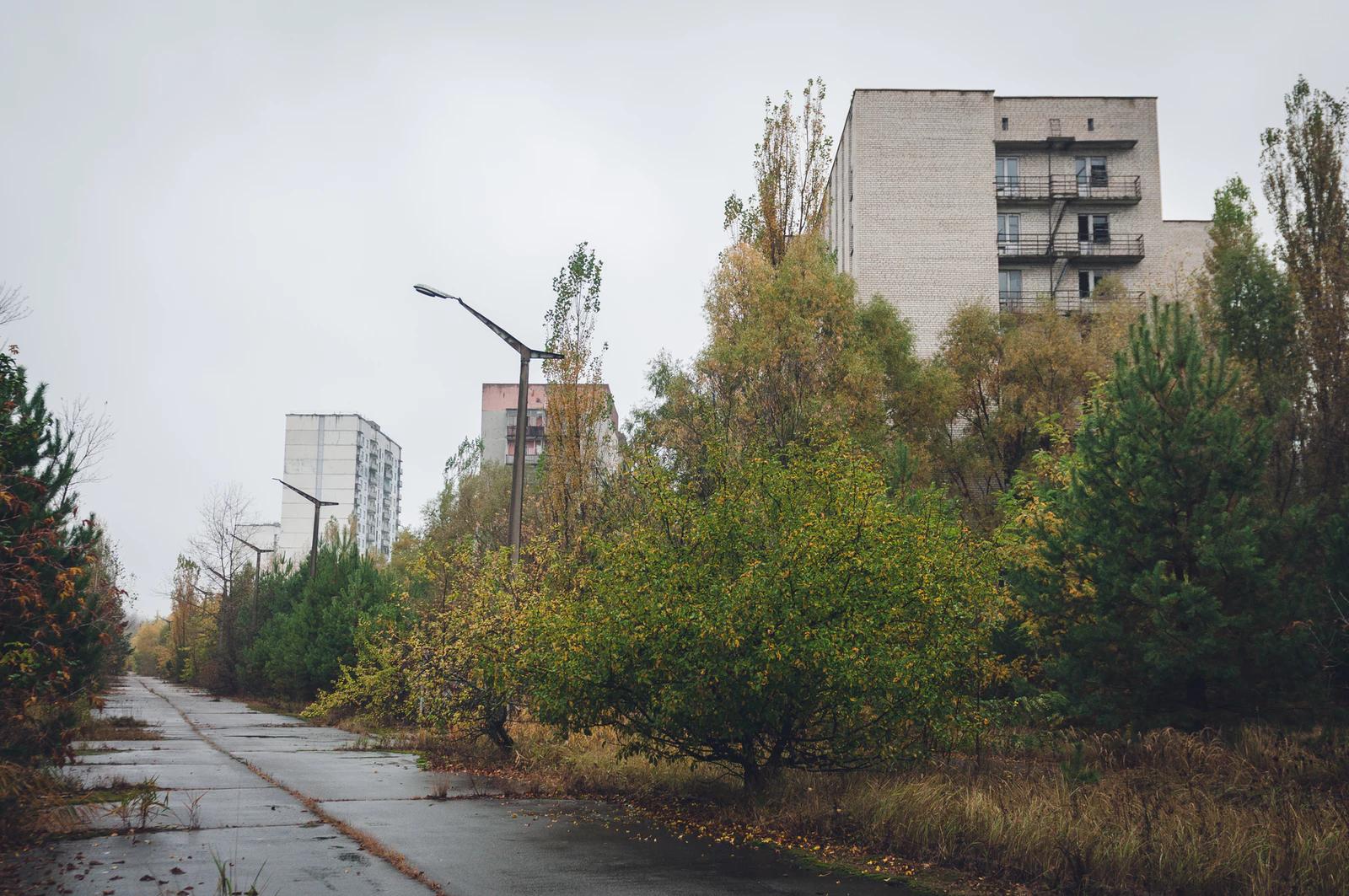
THEACCIDENTTOENDALLACCIDENTS
OnApril26th,1986,justafter1am,atestwasabouttocommenceatUnit4Whatfollowedwasthe worstnucleardisasterinhistory.Thenightshiftwascomprisedof176menandwomenspread throughouttheplant,alongwith286constructionworkersbuildingUnit5,afewhundredmeters awaytothesoutheastThecontrolroomoperatorsofUnit4,alongwitharepresentativeof Donenergo-thestate-ownedelectricitysupplieranddesigneroftheplant’sturbines-weretestinga safetyfeatureintendedtoallowtheUnittopoweritselfforaroundaminuteintheeventofatotal powerfailureTheprincipalconcernofanuclearreactor-particularlyanRBMKreactor,becauseof itsgraphitemoderator-isthatcoolingwatercontinuously�owsintothecore.Withoutittherecould beanexplosionormeltdownEvenifthereactorisshutdown,thefuelwithinwillstillbegenerating decayheat,whichwoulddamagethecorewithoutfurthercoolingThepumpsthatdrivethe�owof coolingwaterrelyonelectricitygeneratedbytheplant’sownturbines,butintheeventofablackout theelectricitysupplycanbeswitchedtothenationalgridIfthatfails,therearedieselgeneratorson sitethatwillautomaticallystarttopowerthewaterpumps,butthesetakeabout50secondstogather enoughenergytooperatethemassivepumps.Therearesixemergencytankscontainingacombined 250tonsofpressurisedwaterthatcanbeinjectedintothecorewithin35seconds,butanRBMK reactorneedsaround37,000tonsofwaterperhour-10tonsasecond-so250tonsisnotnearly enoughtolastfor50seconds.Thus:thetestofa‘run-downunit’.Ifapowerfailurewastooccur,the �ssionreactionwouldobviouslystillbeproducingheat,theremainingwaterinthepipeswould continueitsmomentumforashorttimeandthereforesteamwouldstillbeproduced,andinturnthe turbineswouldstillbespinningandcreatingelectricity,albeitatanexponentiallyfallingcapacity.This smallamountofelectricitycouldtheoreticallybeusedtodrivethewaterpumpsforafewmoments, givingthebackupdieselgeneratorssu�cienttimetogetuptospeedandtakeover,anditisthe hardwarebehindthistheorythatwasbeingtested
DespiteinitialSovietclaimsthattheexperimenthadbeenintendedtotestatotallynewsafetysystem, thisrun-downunitisactuallyastandardfeatureoftheRBMKdesign,andshouldhavebeenmade fullyoperationalduringUnit4’scommissioningthreeyearsearlierInordertoopentheplantaheadof schedule,Chernobyl’sPlantManagerViktorBryukhanov,alongwithmembersofvariousMinistries involvedwiththeconstructionandtestingofanewplant,signedo�onsafetyteststhatwerenever conducted,withtheunwrittenpromiseofcompletingthemlaterAsrecklessasitsounds,thiswas fairlyroutinepractiseintheUSSR,ascompletingworkaheadofscheduleentitledeveryoneinvolvedto signi�cantbonusesandawardsThehardwarerequiredprecisecalibrationandrevisions,andthetest hadalreadybeenconducted3timesbeforeatUnit3-in1982,1984and1985;allfailedtosustain su�cientvoltage-buttheengineershadbynowmadesomeadditionalalterationstothehardware, andsoitwastobeattemptedagainTherun-downtestwasoriginallyscheduledtotakeplaceonthe
Another random document with no related content on Scribd:
F��� ������—Q���� �����
When the Second Company has closed upon the front Company, which stands fast—
S������� ��������.
The two rear Companies close up, and form the rear face of the Square, receiving Halt—Right about face. The remaining Companies wheel outwards by Sections, the rear Sections closing to the front, after the wheel.
2. If on a Flank Company, and to a flank.
S����� �� ��� ����� (�� ����) C������—C�������� ����� (�� ����) ��������� �������—D����� ����� F������.
Leading Company—Halt. Second Company closes on it— Halt.
Remainder (except the two last Companies), as they successively arrive at Quarter distance— Sections outwards. Two last Companies when closed up Halt—Right about face.
3. When the Square is to resist Cavalry.
P������ ��� C������ — R����. *K������� �����—R����— P������—L���. P������ ��� C������ (�� �������� ����).
4. To reduce the Square.
R�-���� ������.
Q���� �����.
The Kneeling ranks do not cock until required to fire. The Standing ranks fire by Files. * The Kneeling ranks, when required to fire a volley.
Rear sections of side Faces step back to wheeling distance, pivot men facing to their proper front, and at Q���� ����� wheel backwards—Halt, Dress. Front Company advances to quarter distance—Halt, Dress.
Two rear Companies retire Halt, Front, Dress.
5. If the Square is to be formed on the two centre Sub-divisions.
O� ��� ��� ������ S����������� ���� ������.
R���� ��� ���� ��������� �������.
Q���� �����.
The outer Sub-divisions of the two centre Companies face inwards, and leading files disengage; the two flank Companies face inwards, and the remaining Companies of the Battalion face to the right about.
No. 1, 2, 3, 6, 7, 8 Companies, Sections successively, Halt, Front. The two centre Subdivisions close by the side step, upon the interval left by the Colours. The Sub-divisions of the two flank Companies are conducted to form the rear Face, the right Sub-division of the Grenadiers covering its left Subdivision, and the left Sub-division of the Light Company covering its right Sub-division, each receiving Halt, Right (or Left) face.
6. To reduce the Square and form Line.
R�-���� ����—Q���� (�� ������) �����
The flank Companies face outwards; and the rear Subdivisions of the centre face outwards, and file into line at Q���� (�� ������) �����— Halt, Front, Dress. The two centre Sub-divisions open by the side step to right, and left. The flank Companies move in file to
their respective places. The other Companies deploy by Sections and (when at their places) receive Right (or left) shoulders forward—Forward— Halt, Dress up.
7. But should it have been previously necessary to move the Square.
F��� ������ ������ �� S�����������—Q���� �����.
The rear Sub-divisions of the side faces fall back to Section distance, and the Pivot men face to their proper front, and at Q���� �����, the Sections which formed the side faces wheel backwards; and the two Sub-divisions of the front face, and four Sub-divisions of the rear face, advance to quarter distance. The Sub-divisions of front face receive—Halt. Subdivisions of the rear face receive Halt—Front.
8. When the Line is retiring, the Square may be formed at once without halting.
O� ��� ������ S��-��������� ���� ������.
The two centre Sub-divisions Halt—Front. The outer Subdivisions of centre Companies “Inwards turn,” and the formation will proceed (as directed in No. 5, Section 21) at the Double march.
S. 22. When the Battalion forms a Square, or Oblong two deep, to protect baggage, &c., against Infantry.
1. F��� ������, ��� ����, �� The two centre Companies
��� ��� ������ C�������� R�������� C��������, ����� ��� ���� ��������� �������—Q���� �����.
stand fast, remaining Companies face to the rightabout, and at Q���� ����� the two centre Companies (4 and 5) close inwards: the remainder right, and left shoulders forward, and move into Square. Nos. 1, 2, and 3, form the right face, 6, 7, and 8 the left face, the Grenadier, and Light Infantry the rear face of the Square, respectively receiving Halt, Front, Dress.
2. When the Square or Oblong is to march by any one face.
T�� ������ ���� ����� �� ��� ����� (����, �����, �� ����) ����.
Flank Faces—�� ���-���������
�� ��� ����� ��� ���� ��������� �����—Q���� �����.
Q���� �����.
H���—R�-���� ������ Q���� �����.
The rear face advances two paces and faces about—Halt, Dress.
The Square marches two faces in Line, (by their centre,) and two faces in Open column of Sub-divisions.
The Sub-divisions in column wheel up and form their faces, and the rear face will close up and then face about.
3. To reduce the Square.
F��� ����—R���� ��� ���� ��������� �������— Q���� �����.
The two centre Companies open out by the side step, to leave room for the Colours.
Remaining Companies, Right (or
left) shoulders forward—Forward —Halt, Dress up.
S. 23. A Battalion halted in Line, to change front to the rear upon the centre.
C����� ����� �� ��� ����
���� ��� ������.
Remaining Companies, T�����
�����, ��� ���� ��������� �������—R���� ��� ����
�������-�����— Q���� �����.
Centre Companies—Right (or left) face—Right Counter-march —Quick march—Halt, Front, Dress up—Eyes front.
The Companies pass each other by the left, those of the Right wing describing a circle to allow room for the others to pass, and when in their proper position—Right (or left) shoulders forward—Forward— Halt, Dress up—Eyes front.
CHANGES OF POSITION OF THE BATTALION FROM LINE BY MOVEMENTS OF THE OPEN COLUMN ON A FIXED POINT
S. 24. The Battalion to change position to the front on the right halted Company, by throwing forward the whole Left, and by the flank march of Companies.
1. F��� ���� ������ ��
����� �� ��� ����� C������—R��������
C��������—R���� ����
Q���� �����
If the change of front is to be at right angles with the old line, the right Company stands fast; if oblique to it, that Company will wheel back on the right flank as many paces as will make it perpendicular to the new direction. Remaining Companies face to the right, and disengage to the left—Halt, Front, Dress.
R���� ����� ���� ����. Halt, Dress—Eyes front.
2. The Battalion may change its position to the Left, Right thrown forward, by the formation of the Open column in front of the left halted Company.
3. If the Change of position is effected by the formation of the Open column on a central Company, the caution will specify which flank is to be thrown forward. The Companies face inwards, and disengage.
4. When a Battalion is to change position on a flank halted Company, by throwing back the other flank.
F��� ���� ������ �� ���� ��
��� ����� (�� ����)
C������— R��������
C��������— R���� (�� ����) ����— Q���� �����.
R���� (�� ����) ����� ���� ����—Q���� �����.
Remaining Companies—Halt, Front, Dress.
Halt, Dress—Eyes front.
ON A DISTANT POINT.
S. 25. The Battalion in line changes position by breaking into Open column, marching up in column to the point where its head is to remain, and entering the line by the flank march of Companies.
R���� (�� ����) ����—Q����
�����. H���
The Battalion in Open column to form at a point where its leading flank is to be placed, receives—Halt— when its leading division is at wheeling distance short of that point.
S. 26. The Battalion formed in line, changes position by breaking into Open column, marching to a point where its head is to rest, and to which its rear divisions form, by successively passing each other, and wheeling up.
F��� ���� �� ��� ������� �����.
Leading division—Right (or left) shoulders forward—Forward
—Halt, Dress. Remaining divisions successively—Right (or left) shoulders forward—Forward —Halt, Dress up.
OPEN COLUMN MOVEMENTS.
S. 27. When the leading flank of the Column is changed by the successive march of Divisions from the rear to the front.
H���—
B� ���������� ��������� —
R��� ���� �� ��� �����
If Right in front; Rear Company —Right face—Quick march— Front turn. Remaining Divisions in succession, when their rear Division passes them—Right face—Quick march—Front turn. If left in front, the rear Divisions are faced to the left.
S. 28. To change the Wings of a column formed upon a road, where the space does not admit of the Flank movement.
B� ������ ����� ���� ���
������, ���� ���� �� ��� �����. T�� ������
S������� �������� �����
—Q���� �����.*
Rear Company—Inwards face, by Files from the centre. Remaining Companies*—Halt, Dress. Rear Division when clear of the column—Form Company —Forward. Remaining Divisions in succession when clear— Inwards face—Quick march— Form Company—Forward.
S. 29. When the Column, at open, or half distance, is required to form a Square.
1. If the Square is to be formed on the front Company.
F��� ������ ���� ��� �����
C������—Q���� �����.
(Vide S. 21, No. 2.)
2. If upon a central Company
F��� ������ �� ��� �����
(�� ����) ������ C������
—R���� (�� ����) ����—
R���� ����� ����—Q����
(�� ������) �����.
The Officer commanding the named Division, gives—Sections outwards; the rear Sections closing on the front Sections. The Left wing will close to Section distance, and the Companies receive, in succession—Sections outwards; the Right Wing will move to the Centre, rear Rank in front, and when each Company shall close up to the one preceding it, Companies 3, 4, 5, 6, Front turn, Sections outwards, and the rear Sections close to the front. Nos. 1 and 2—Halt, Front,—Nos. 7 and 8—Halt, Right about face.
3. If an Open column, moving to front, or rear in File, or Sections of Threes, be attacked by Cavalry.
If in File.
F��� ������ �� ��� ������
—W���� ������ ����—
D����� �����.
The Divisions turn to the right, and left; and if the Column be right in front, when the left centre Company has turned it receives —Sections outwards; the Wings close on the centre, at the double march, and each Company wheels outwards into Square; as in No. 2.
If the Column is moving in Sections of Threes.
R���� (�� ����) ��������� �������.
F������—S����� �� ���
The Formation proceeds as before.
������—R���� ����, ����� ����� ����—D�����.
The Column is re-formed as directed in S. 21, No. 4.
QUARTER DISTANCE, AND CLOSE COLUMN
S. 30. When a Battalion forms a close, or quarter distance Column, from Line.
1. If a Close Column before, or behind, either of the flank Companies.
F��� ����� (�� ������� ��������) ������ �� ——
C������, ����� (�� ����) �� �����—R���� (�� ����) ����—Q���� �����
2. On a central Company.
I������ ����—Q���� �����.
All except the named Company—Halt, Front, Dress.
All except the named Company—Halt, Front, Dress.
In the same manner, Column may be formed from Line upon any Company facing to the rear; that Company countermarching by files, and the Wings facing outwards, and countermarching to the right, or left; and forming as before.
In all Counter-marches from Line, the Company of formation will be faced by the command of its own Officer.
3. If a Quarter distance Column upon any named Company.
F��� ������ �� ������� ��������, ����� (�� ����) �� �����, —— �� C������ R�������� C��������, ������ S�������� �������— Q���� (�� ������) �����—F������.
Shoulders forward—Halt, Dress, as in Nos. 1 and 2.
The leading threes of the Company next the one of formation must wheel upon its centre file in disengaging to the rear.
4. The Close column may be formed from Open column.
C���� �� ��� �����—Q����
(�� ������) �����.
Or without halting—C���� �� ��� �����—D�����.
If on the March, Leading division—Halt. Remaining divisions successively—Halt: When on the Double march— Quick.
S. 31. When the Column, at close, or quarter distance, marches to a flank.
C����� ���� ����� �� ���
����� (�� ����) �����
R���� (�� ����) ����
Q���� �����—H���, �����.
If the Column is at quarter distance, it may be marched to a flank in Sections of threes.
T����� ����� (�� ����)
��������� �������
Q���� �����—F������
S. 32. When the Column at quarter distance, moving to front, or rear, takes ground to the Right, or Left, by the Echellon march of Sections.
1. S������� ����� (�� ����)—
F������.
2. R�-���� C�����—
F������.
Officers remain on their proper pivot flank.
Ground may be taken to a flank by the diagonal march.
R���� (�� ����) ���� ����.
S. 33. When a Column halted, at Close, or Quarter distance, is to wheel on a fixed, or moveable pivot.
1. At close distance on a fixed pivot.
C����� �� ��� ����� (�� The flank file of front Company
����) �����—Q���� (�� ������) �����—H���.
will face. Remaining Companies make a half face.
Vide S. 10. No. 6.
2. At close distance on a moveable pivot.
R���� (�� ����) ��������� �������—H��� (�� �������).
Rear Divisions will make a half turn to the outward flank, and circle round.
If the Column is to wheel in double time.
D�����—F������—Q����.
3. At Quarter distance on a fixed pivot.
R���� (�� ����) �����— Q���� (�� ������) �����— H���.
Rear Divisions half face to the wheeling flank. The front Division will advance six paces, and wheel at shortened pace round the Pivot, the rear Divisions circling round.
4. At Quarter distance on a moveable pivot.
R���� (�� ����) ��������� �������—D�����— F������—Q����.
The Front division moves round at a short pace, the pivotman gradually advancing in the new direction.
S. 34. When a Close, or Quarter distance Column is to change its front by the wheel and countermarch of Sub-divisions round the centre.
1. If at the halt.
C������-����� �� S����������� ����� ��� ������ —R���� (�� ����) S�����������—R���� ����� ����—Q���� (�� ������)
The Reverse sub-divisions face about. The whole wheel round in succession.
* When the leading Subdivision is in a line upon the new
�����—*H���, F����, D����.
front of the Column. Front applies to the Reverse subdivisions only.
2. If the Column at Quarter distance is on the march.
R���� (�� ����) S��-��������� —R���� ����� ����— F���� ����—F������.
S. 35. When a Column at close, or quarter distance, is to open out to full, or half distance, from front, or rear.
1. If from the front.
C����� ���� ���� ���� ��� �����—R���� ����� ���� Q���� �����
2. If from the rear.
C����� ���� ���� ���� ��� ����—Q���� �����
The requisite number of paces are counted by the leaders of each Division. Halt, Front.
Each Division leader gives Halt to the Company in his front, when at the ordered distance.
DEPLOYMENTS
Deployments are made from Column invariably on the base of the front Company; Close columns deploy in File.
S. 36. When the Battalion in column of Companies, at Close, or Quarter distance (right in front), deploys into Line.
FROM CLOSE COLUMN
1. On the Front Company.
D����� �� ��� ����� C������—R�������� C��������, ���� ���� Q���� �����.
Each Company, in succession —Front turn—Halt, Dress up— Eyes front.
2. On the Rear Company
D����� �� ��� ���� C������ —R�������� C��������, ����� ����—Q���� �����.
When the front of the named Company is clear, the Officer commanding it gives— Double march—Halt, Dress up—Eyes front—Remaining Companies successively —Halt, Front. When uncovered, Quick march, and when in the alignement, Halt, Dress up—Eyes front.
Deployments on a central Company are performed in a similar manner. In deploying on a rear, or central Company, the Company of formation will be moved up in Double time.
FROM QUARTER DISTANCE COLUMN.
3. When a Battalion in Column of Companies at quarter distance, right in front, deploys upon its Front division.
D����� �� ��� ����� C������—R�������� C��������, ������— R���� ��������� ������� —
Q���� (�� ������) ����� F������
4. On a Rear Company.
D����� �� ��� ���� C������ —R�������� C��������, ������— L��� ��������� ������� —Q���� �����— F������.
Left shoulders forward— Forward— Halt, Dress up—Eyes front.
When the Front is clear, Rear Company —Double march— Halt, Dress up—Eyes front. The other Companies successively —shoulders forward—Halt. When uncovered —Quick march —Halt, Dress up—Eyes front.
The Base points are three paces in advance of the Front Company of the Column.
ECHELLON FORMATIONS AND MOVEMENTS.
S. 37. When a Battalion from Line wheels forward by Companies, to either flank, into Echellon.
1. C�������� —— ����� �� ��� —— �����—Q���� �����.
Halt, Dress.
2. When the Echellon thus formed marches forward, and halts.
Q���� �����—H���
S. 38. When the Battalion having wheeled from Line into Echellon, has marched, and halted, and is to form back parallel to the Line it quitted.
W���� ���� ���� ����—Q���� �����.
Halt, Dress—Eyes front.
S. 39. When the Battalion having wheeled from Line into Echellon, has marched and halted, and is to form up oblique to the Line it quitted.
1. If the Formation is made forward.
L������ D�������, —— �����
����� (�� ����) �����
Q���� �����. F��� ����
Q���� �����.
Leading Division—Halt, Dress —Eyes front. Remaining Divisions—shoulders forward— Halt, Dress up—Eyes front.
2. If the wheel of the leading Division exceed the number of paces which it before wheeled from Line into Echellon, the others wheel up one-half of that excess, move on, and successively dress up with it.
3. If the formation is to be on the prolongation of the front Division as it stands, the others wheel back one-half of what they originally wheeled forward, then move on, and dress up with it.
S. 40. When the Battalion formed in Line changes front on a fixed flank Company, by throwing forward the rest of the Battalion.
C����� ����� �� ——
Company of formation—Halt,
C������, ����� (�� ����)
������ �������, ——
C������ —— ����� ����� (�� ����) �����. Dress.
R�������� C��������, ——
����� �� ��� —— �����—
Q���� �����.*
Q���� �����.†
Remaining Companies—
* Halt, Dress.
† —— shoulders forward— Halt, Dress up—Eyes front.
S. 41. When the Battalion changes front on a fixed flank Company, by throwing back the rest of the Battalion.
C����� ����� �� ——
C������, ����� (�� ����) ������ ����.
R�������� C��������, ����� ����� ����, —— ����� �� ��� —— �����—Q����
�����.
—— Company on the —— backwards wheel—Quick march —Halt, Dress.
Halt, Dress.
Q���� ����� (�� �����). —— shoulders forward—Halt, Front, Dress up—Eyes front.
S. 42. When the Battalion changes front on a central Company, by advancing one Wing, and retiring the other.
The Company of the Wing to be thrown back is wheeled backward, and the Company of the wing to be brought forward is wheeled forward; or a Central Company is wheeled upon its centre into the new direction.
—— W���, ����� ����� ���� —C�������� —— ����� ������� �����—Q���� �����.
Halt, Dress.
Q���� ����� Companies successively shoulders forward— and when in Line, those of the advancing Wing receive—Halt, Dress up:
the retiring Wing—Halt, Front, Dress up.
S. 43. When, from Open column, the Companies wheel backward into Echellon, in order to form in Line on the front Company.
1. F��� ���� �� ��� �������
D�������.
R�������� D�������� ——
����� �� ��� —— �������� �����—Q���� �����.
Q���� �����.
The front Company remains square to the Column, or is wheeled backward into the intended direction of the Line by its Officer.
If the front Company remains square, the remaining Companies wheel back four paces, or the eighth of a circle; but if the direction be Oblique, then the remaining Companies wheel one-half the number wheeled by the front Company, in addition to the eighth of a circle—Halt, Dress. —— shoulders forward—Halt, Dress up—Eyes front.
2. If the Line be formed on the rear Company of the Column, that Company will stand fast, the others will receive.
R���� ����� ����, —— ����� �� ��� —— B�������� �����—Q���� �����.
Q���� �����.
Halt, Dress. —— shoulders forward—Halt, Front, Dress up—Eyes front.
3. If the Line is to be formed on a rear Company, but facing to the Rear.
F��� ���� �� ���� C������, ������ �� ��� ����.
T�� ������ ���� ������������.
Halt, Front, Dress—Eyes front.
—F���—Q���� �����. F���
���� �� ��� �������
D�������.
R�������� D��������, ����
����� �� ��� ——
�������� �����—Q���� �����.*
Q���� �����.†
* Halt, Dress.
† —— shoulders forward— Halt, Dress up—Eyes front.
4. If the Line be formed on a Central Company of the Column.
F��� ���� �� ��� R���� (��
L���) ������ C������, ——
���� ����� ����� ����
F��� ����� �� ��� ����� (�� ����) ��������� �����
—Q���� M����.
Q���� �����
All except the central Company Halt, Dress.
Companies of Wings (except Company formed on)—— shoulders forward—Halt, Dress up—Eyes front. Or —— shoulders forward—Halt, Front, Dress up—Eyes front.
S. 44. When from Line the Companies of a Battalion march off in Echellon, successively and directly to the front; and again form Line to the front, or flank.
1. When the intention is to form Line to the front.
A������ �� ������ �������� �� C�������� ���� ��� ����� (�� ����).
When the leading Division receives—Halt, the others move on, and Halt, Dress up, in line with it.
2. When the intention is to form Line to the flank.
F��� ���� �� ��� ����� (�� ����) �����.
B� D��������, ���������
Leading Division—Halt, Dress —Eyes front.
Remaining divisions—Halt,
�������—F������
Dress up— Eyes front.
3. If a Column is to be formed to the flank, from a direct Echellon.
F��� ������ �� ���� �� ���
������� D�������—T�����
S�������� �������
F������.
—— shoulders forward—Halt, Dress.
S. 45. When a Battalion, in Echellon of Companies, halted, or in motion, is required to form square.
C�������� ����� (�� ����)
��������� �������
F������—F��� ������.
The formation will proceed as directed in Section 29.
S. 46. When a Battalion marching in Line is to take ground to a flank by the Echellon movement of Sub-divisions, or Sections.
1. S��-��������� (�� S�������) ����� (�� ����)—F������.
2. When sufficient ground has been taken to the flank.
R�-���� ����—F������ H���.
3. When sufficient ground has been taken in Echellon to a flank, and a forward formation of the Line is to be made.
F��� ���� �� ��� ������� D�������.
The head Division is wheeled up two paces more and halted. Divisions successively —— shoulders forward. Halt, Dress up—Eyes front.
In taking ground to a flank, if a small degree of obliquity from the former position is to be taken, the Line may wheel forward by Companies; if a greater, by Sub-divisions; and if a greater still, by Sections.
